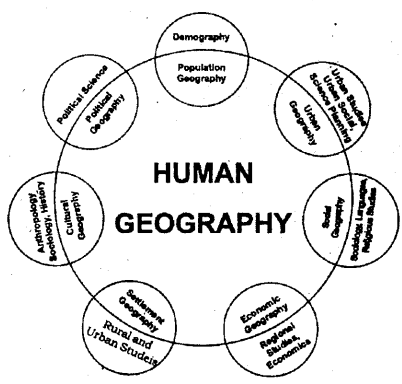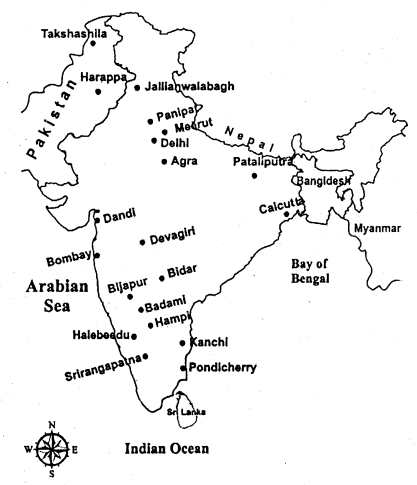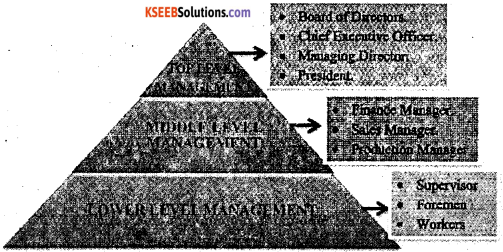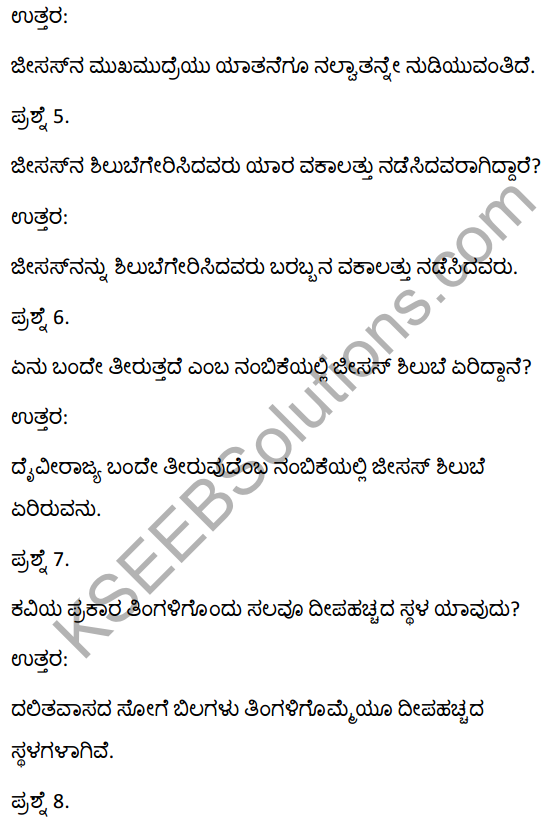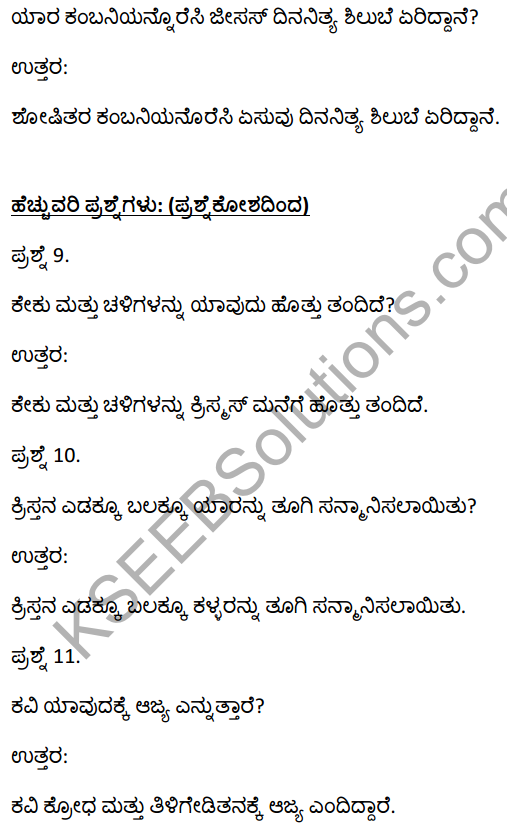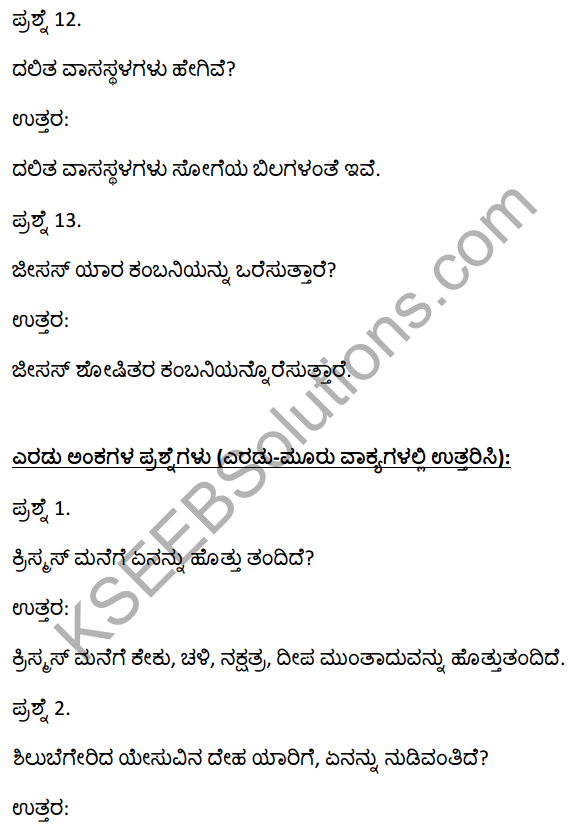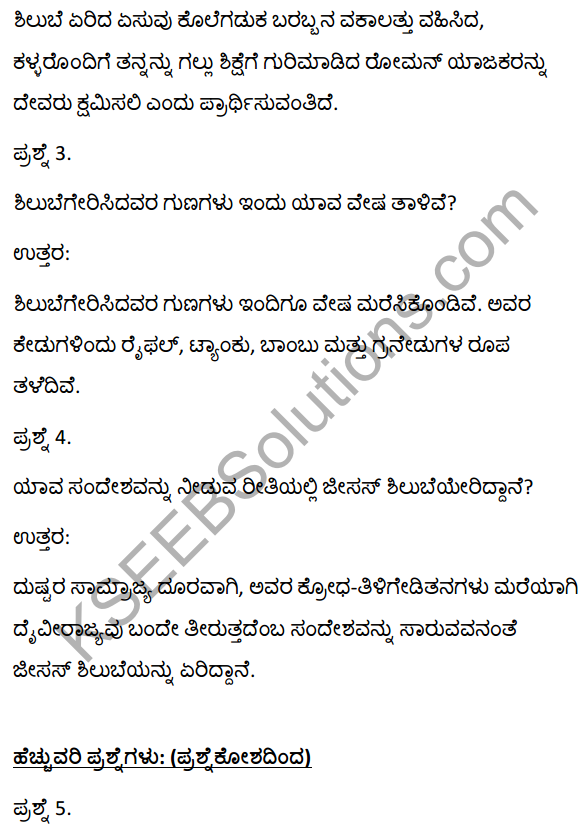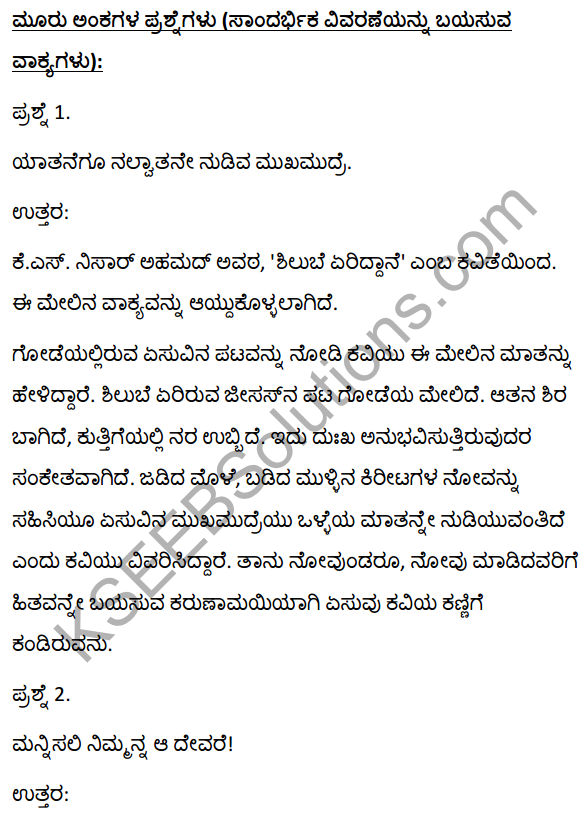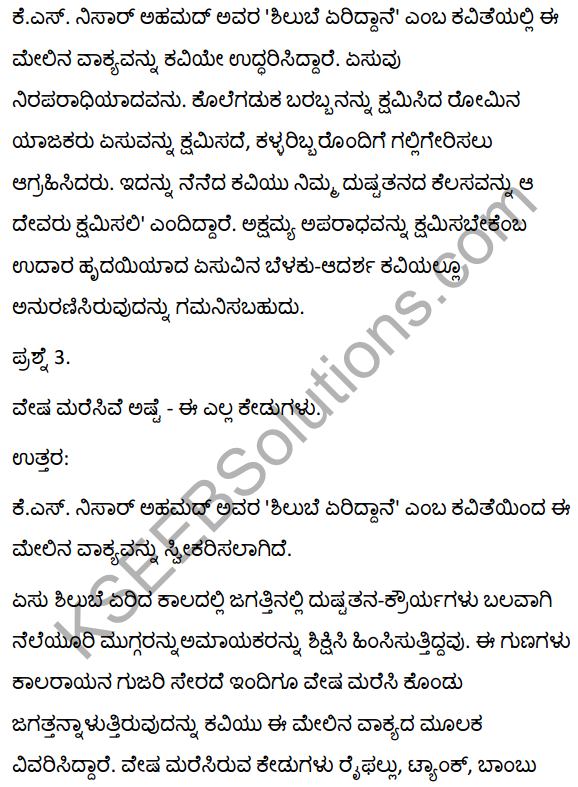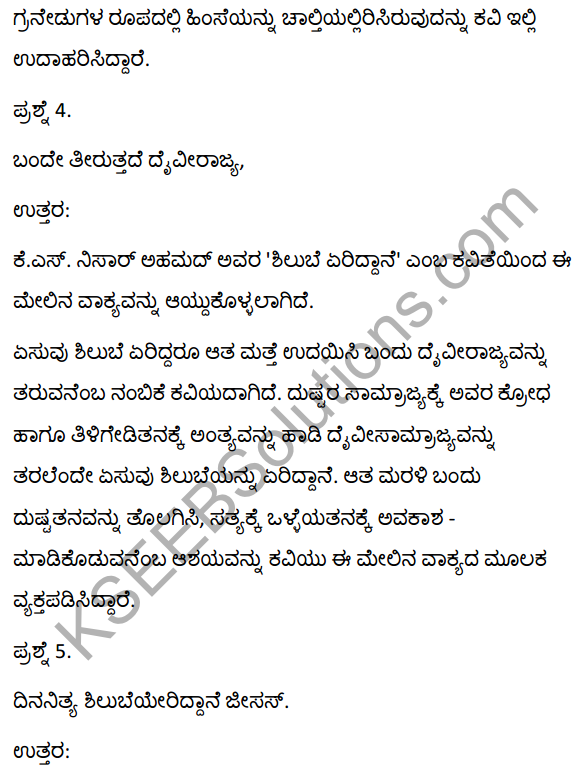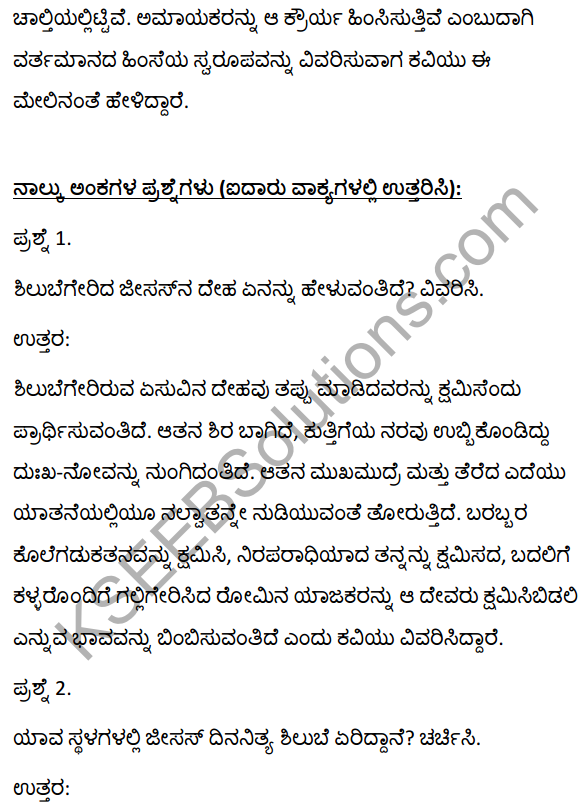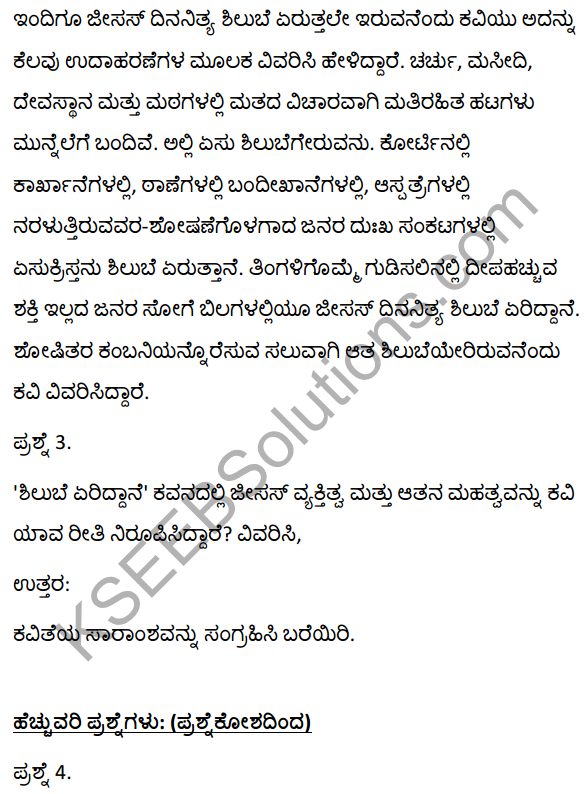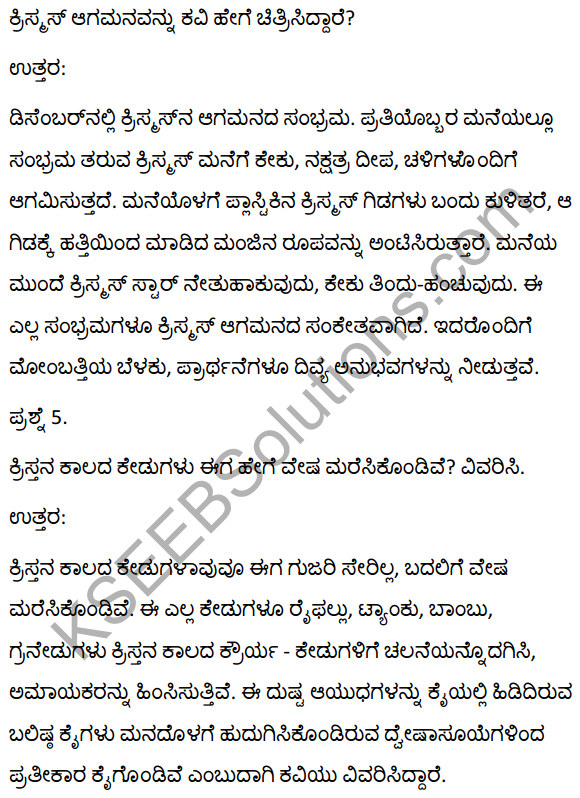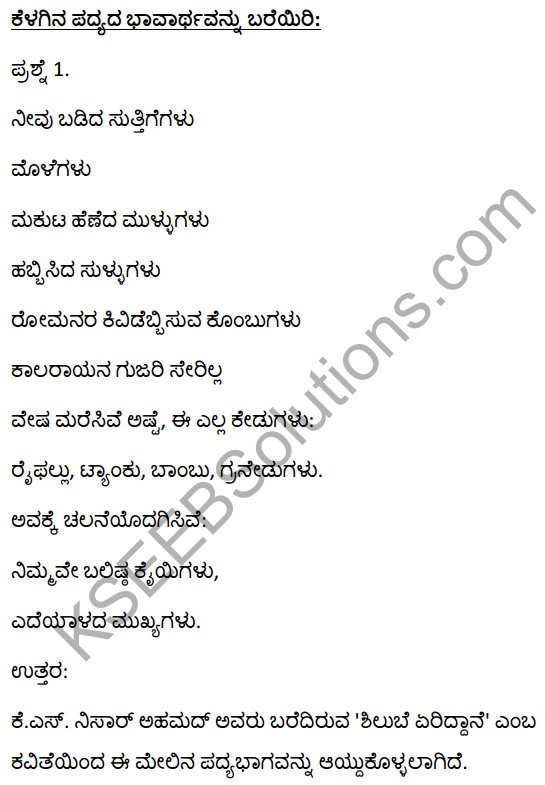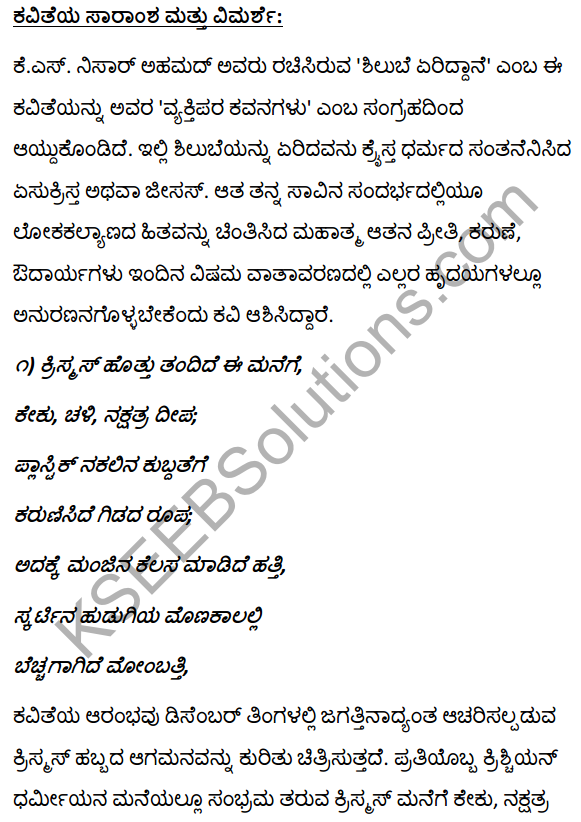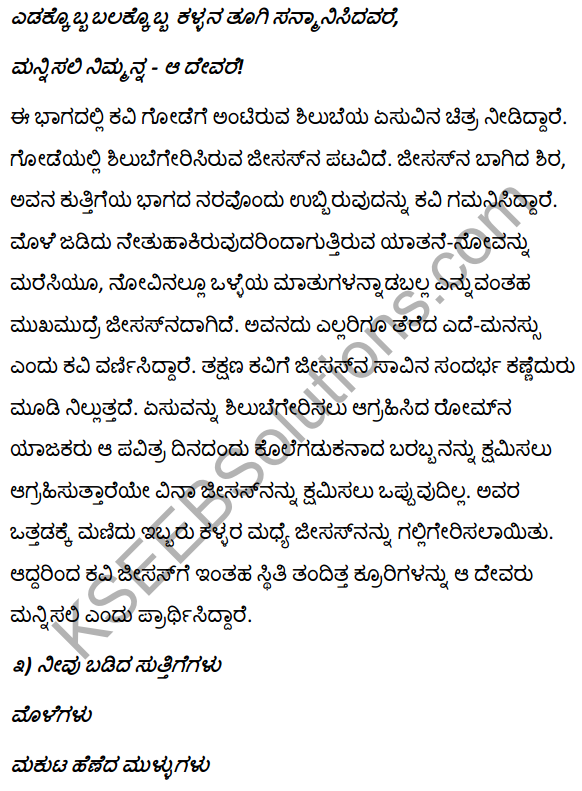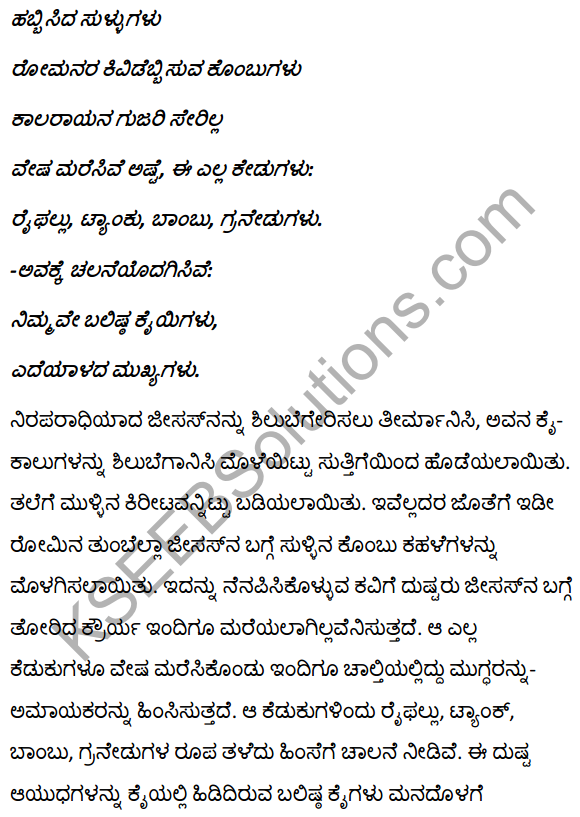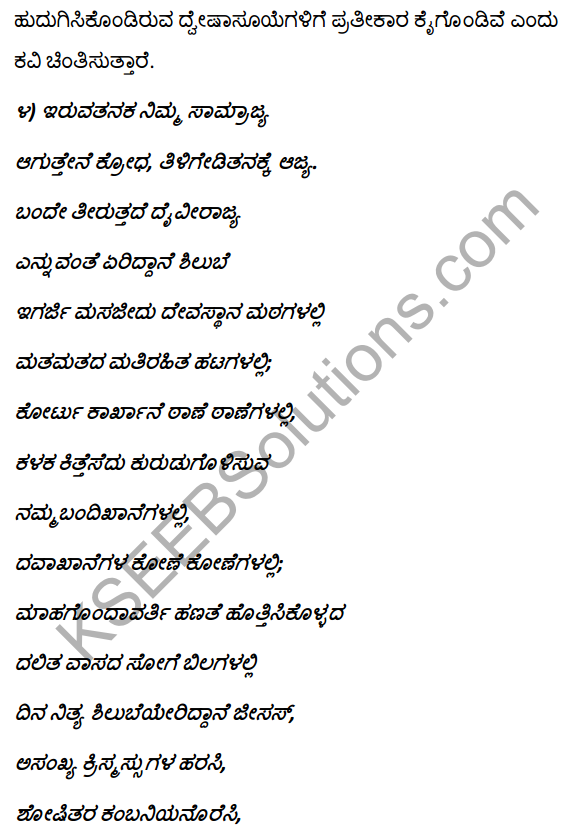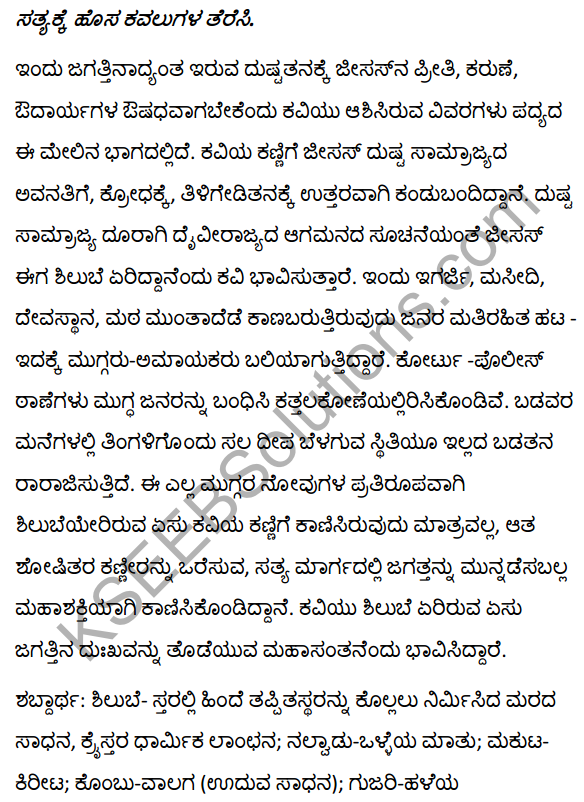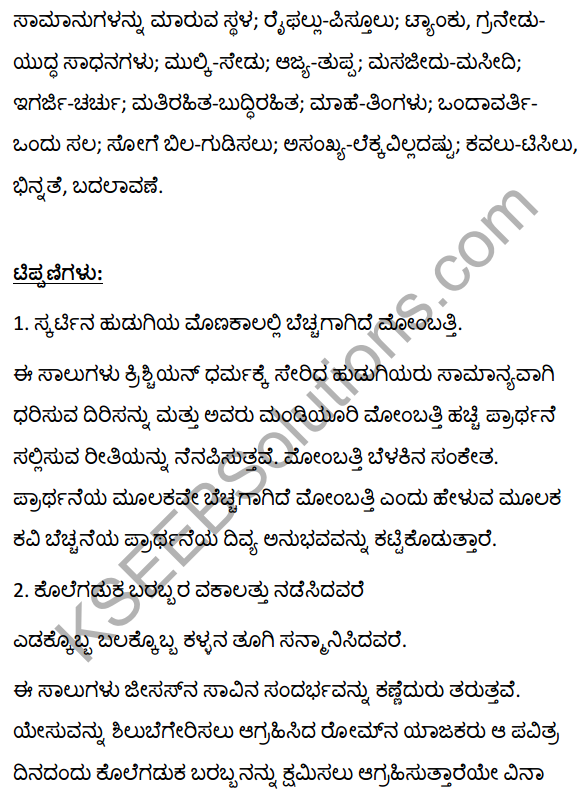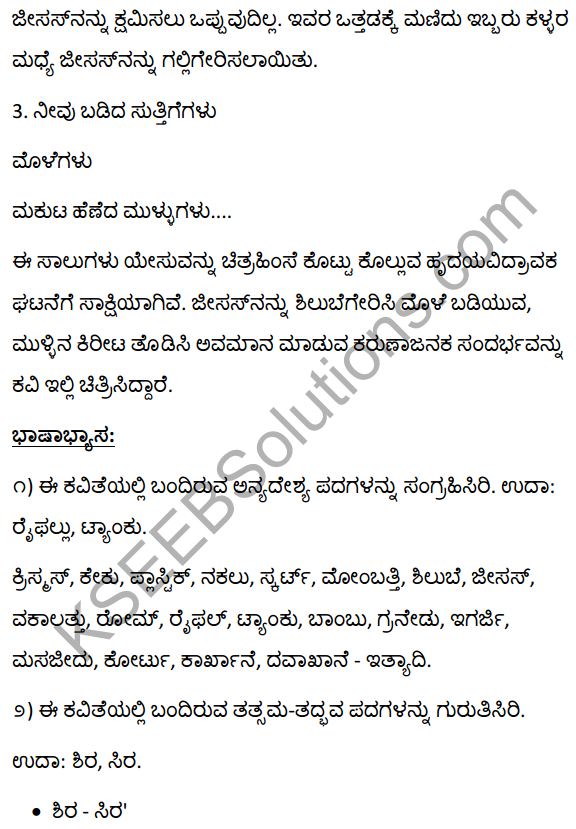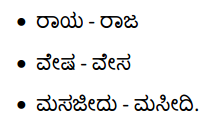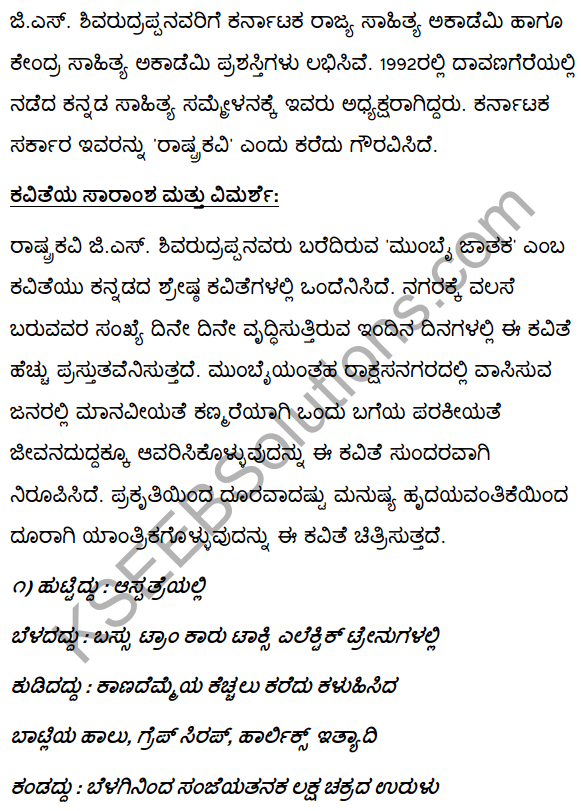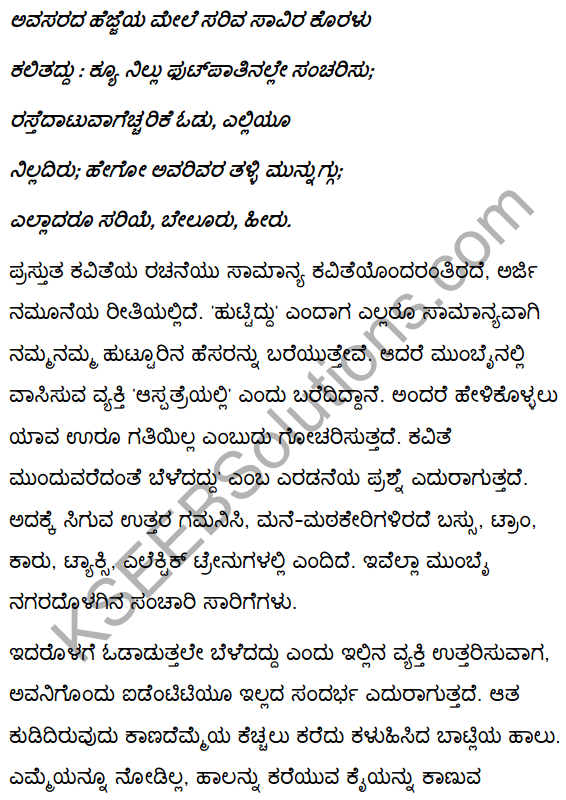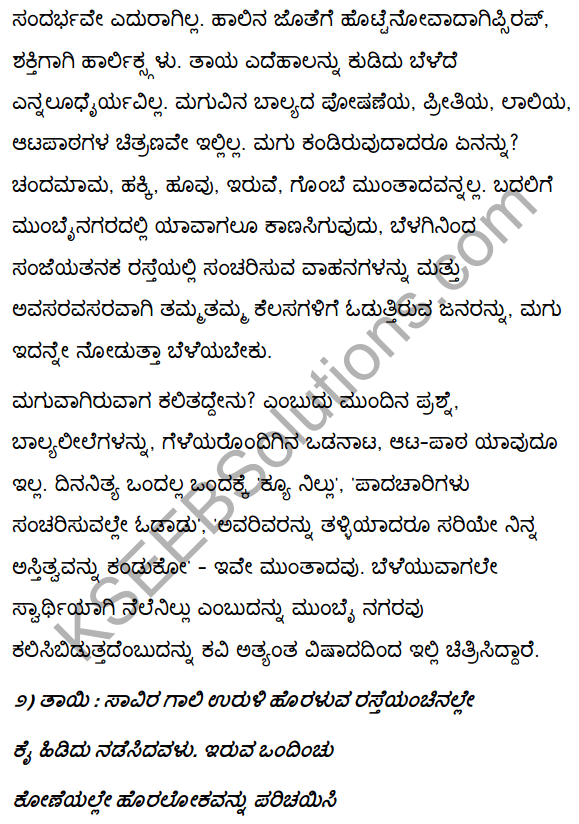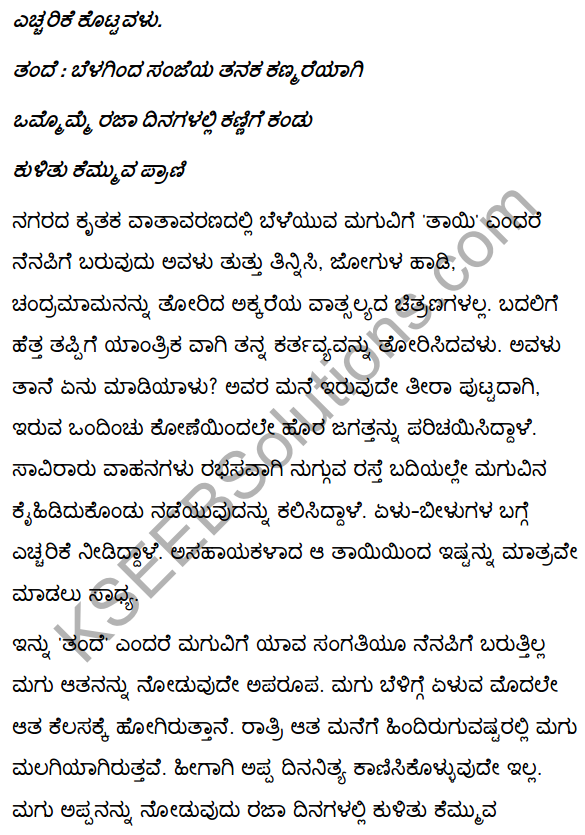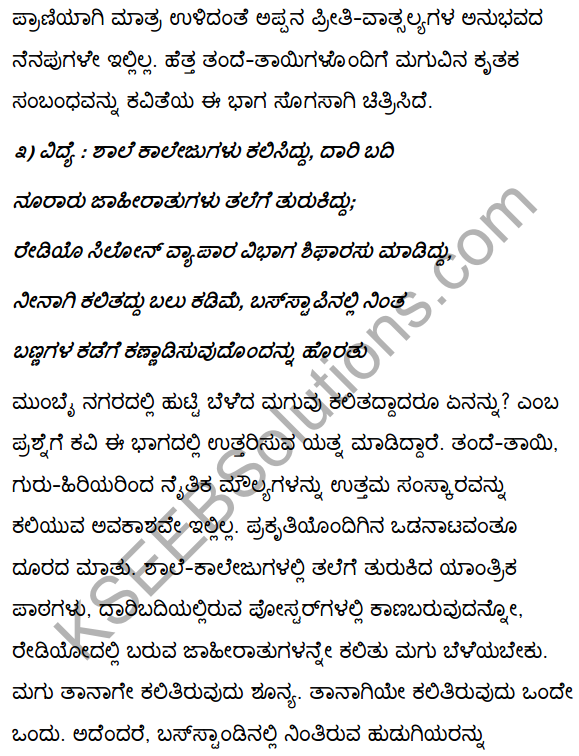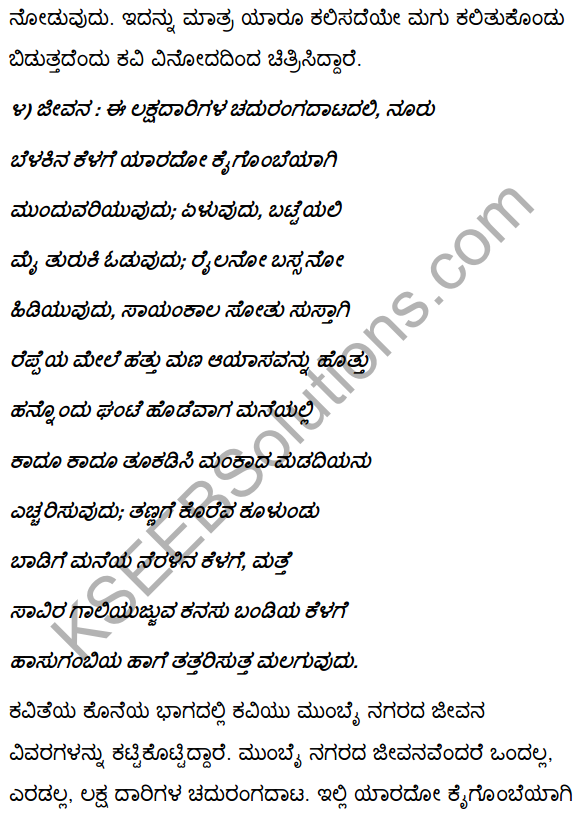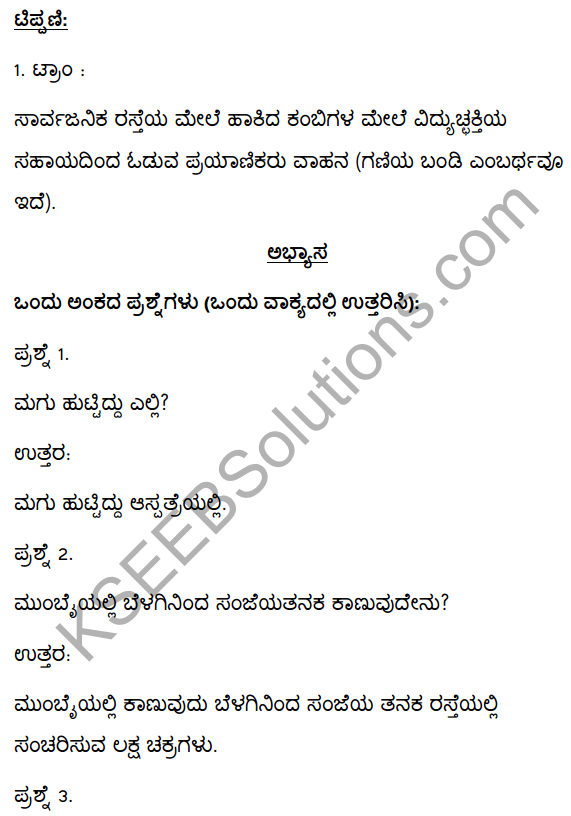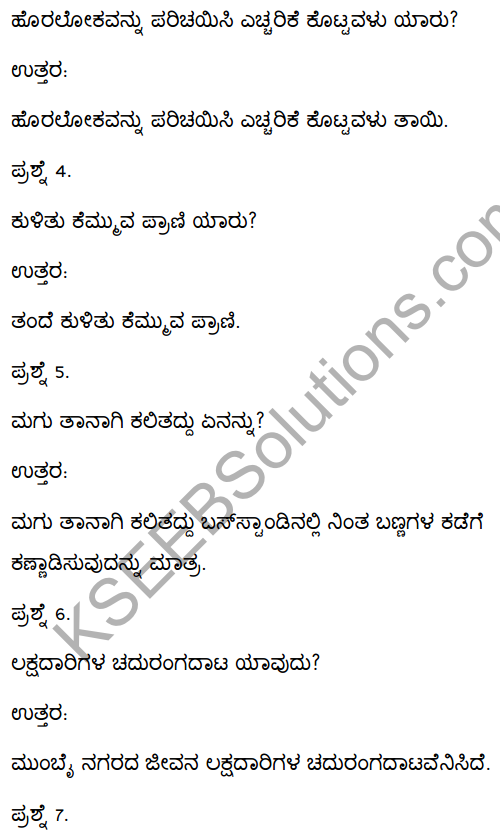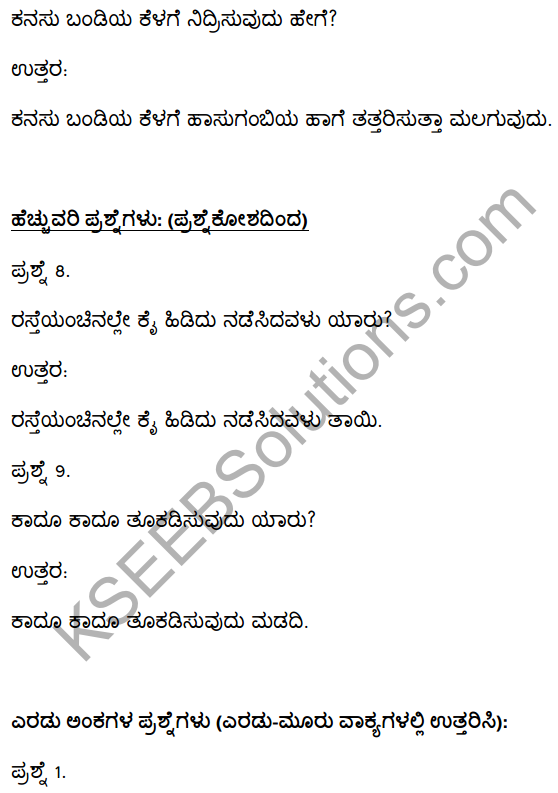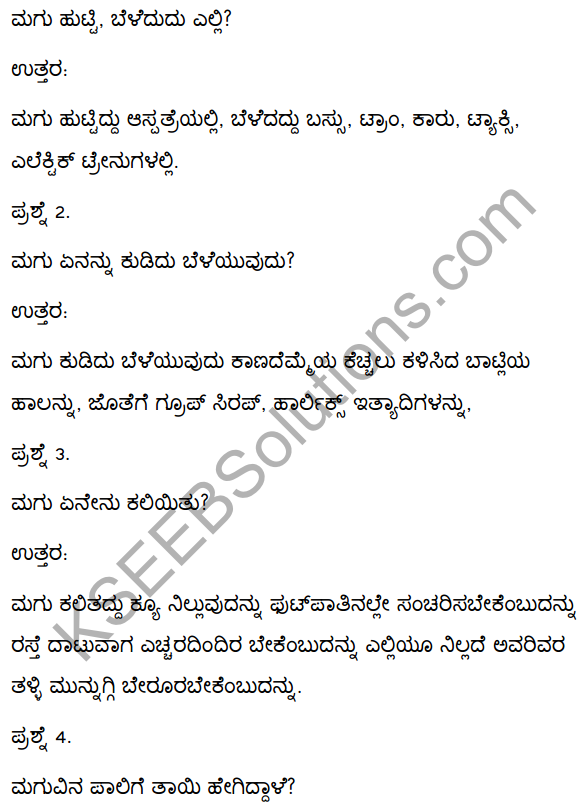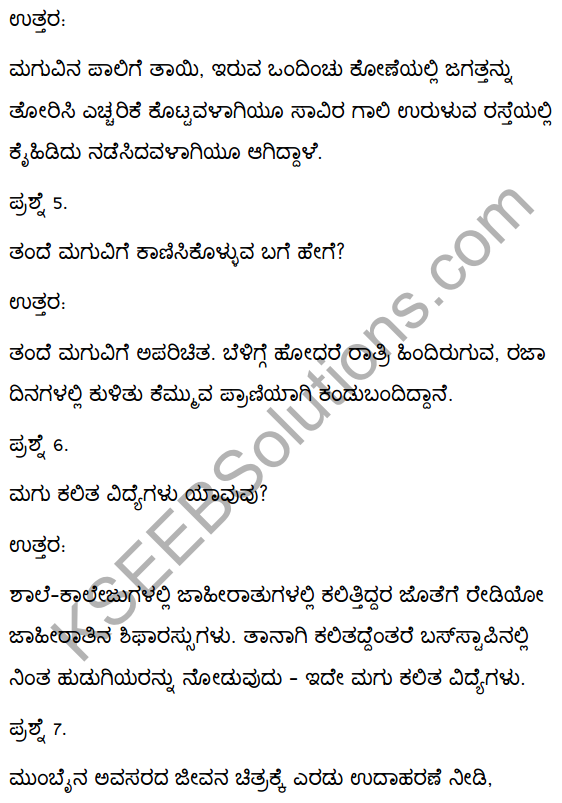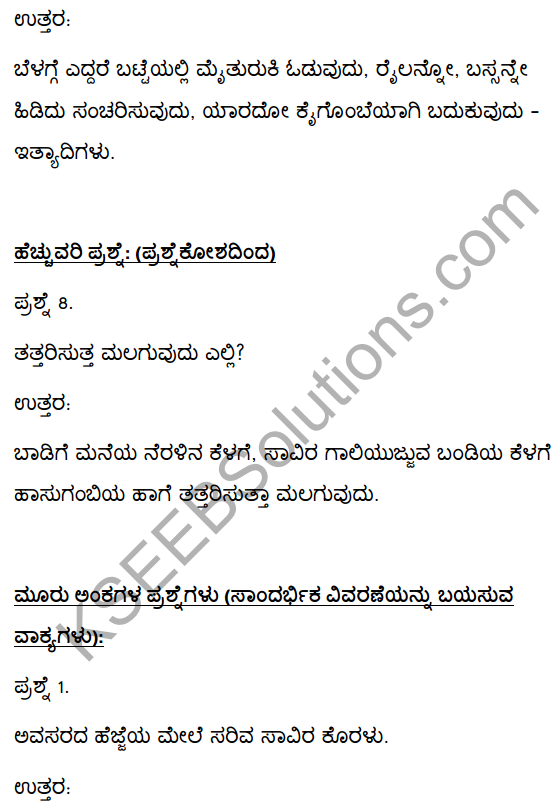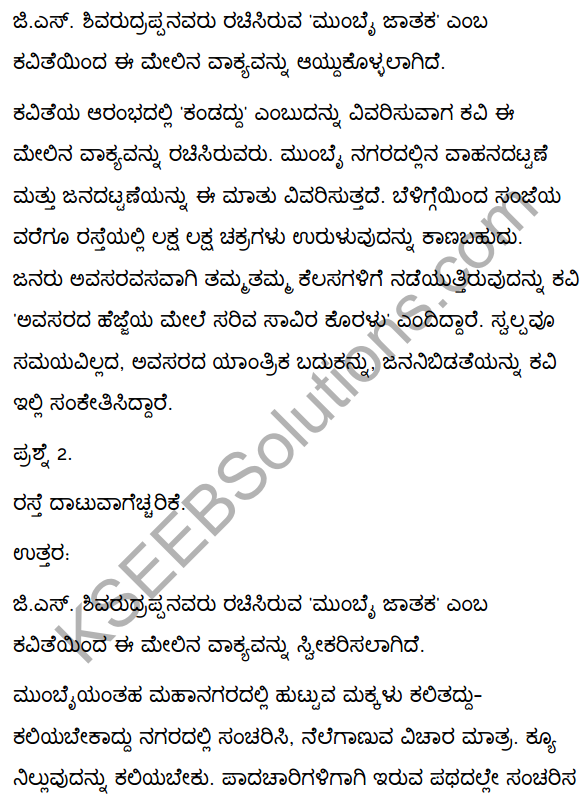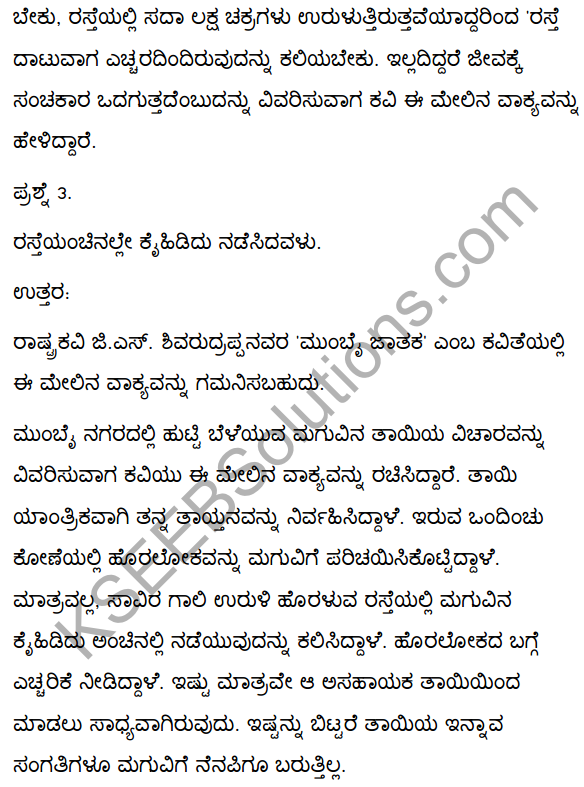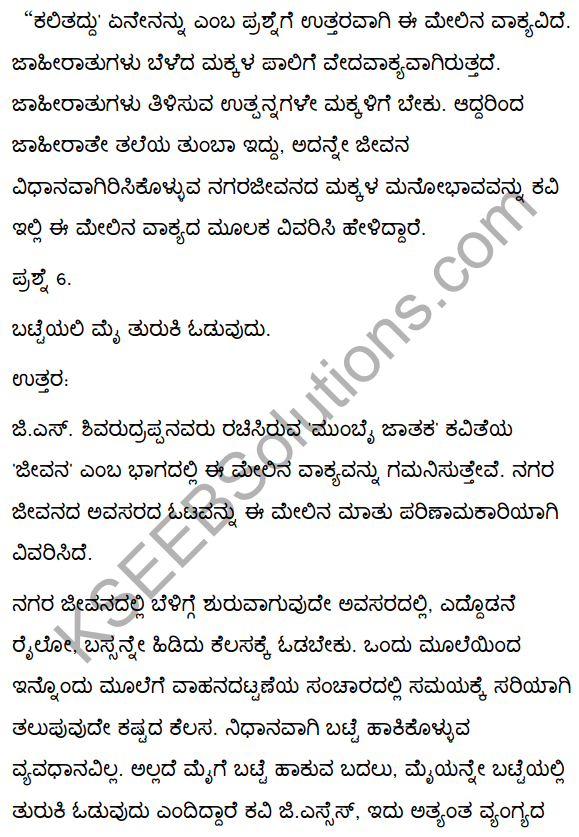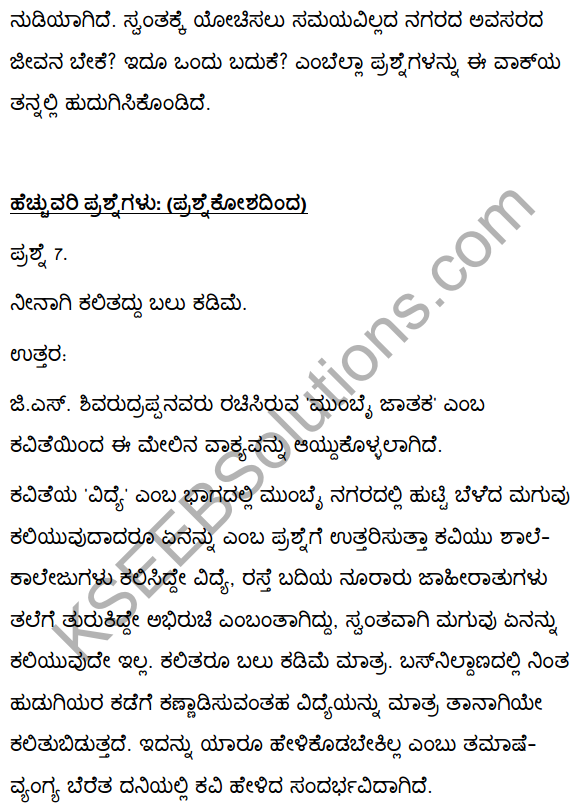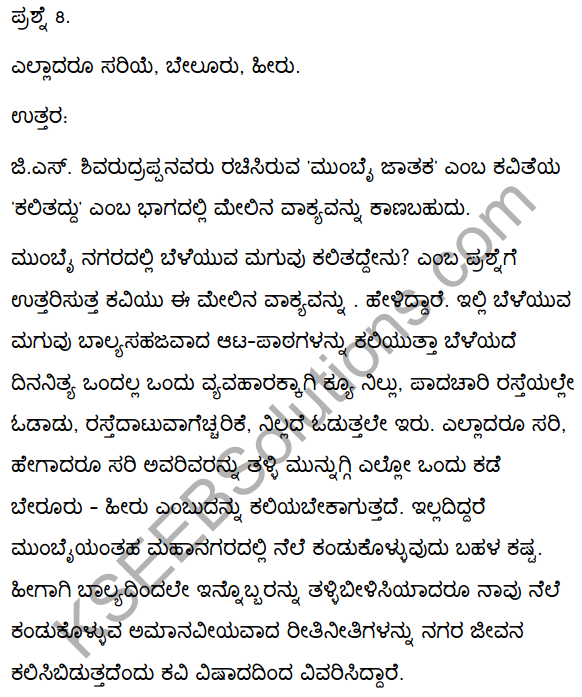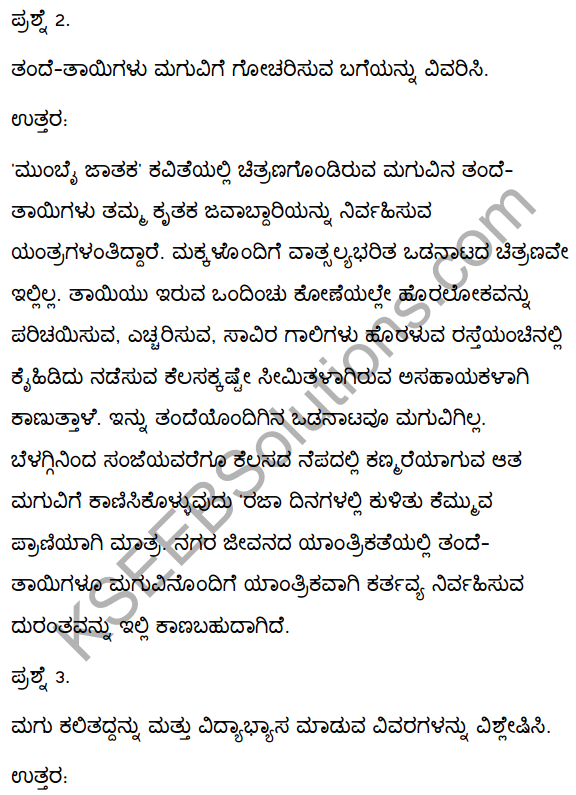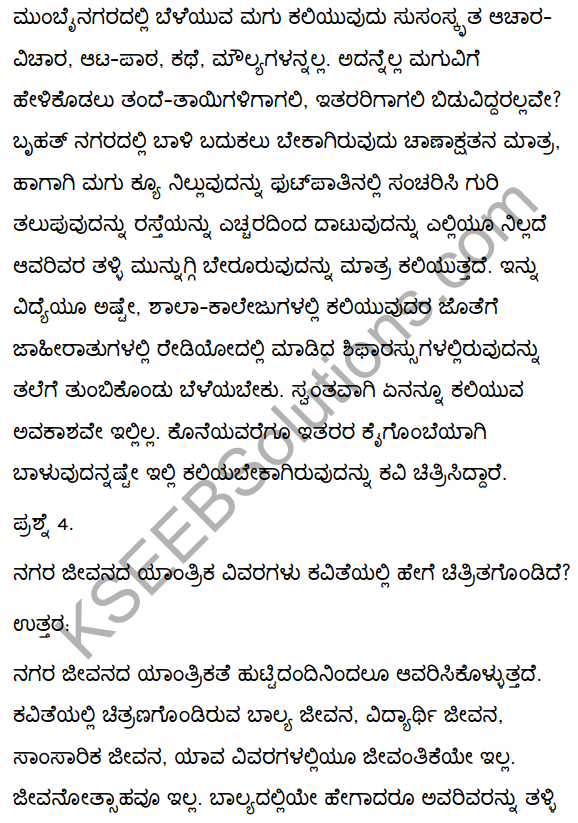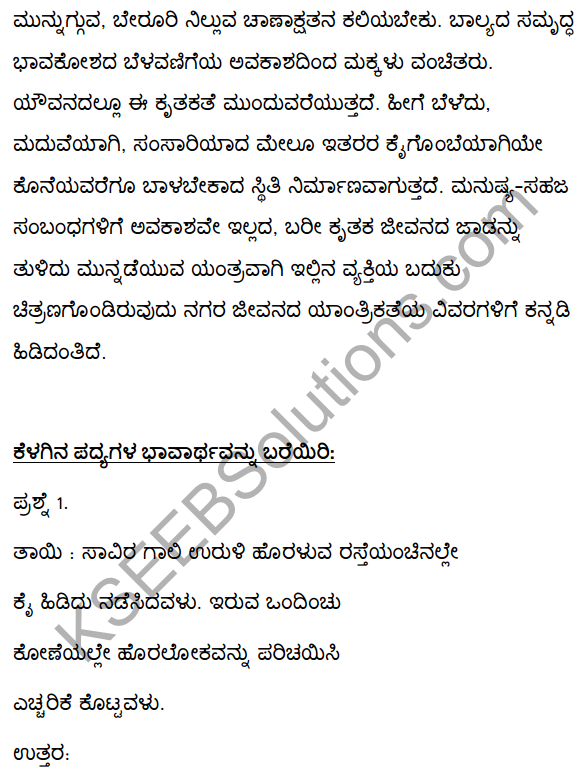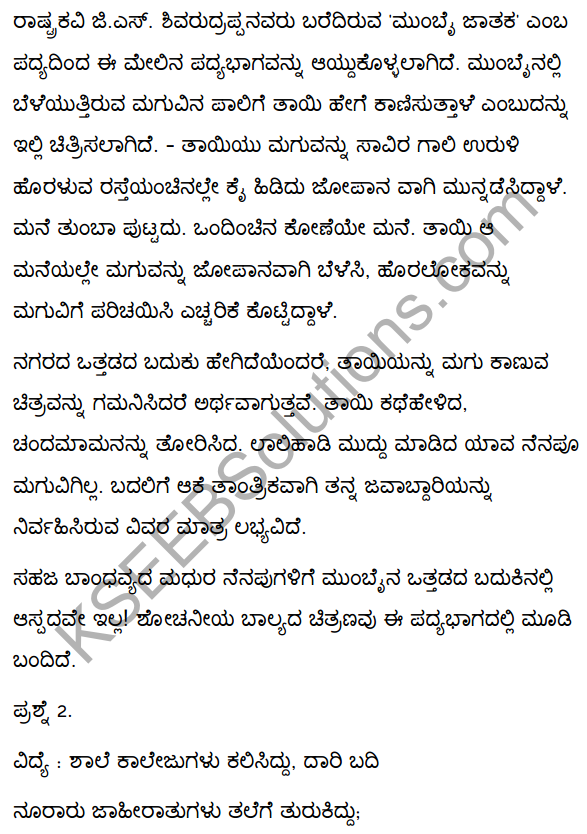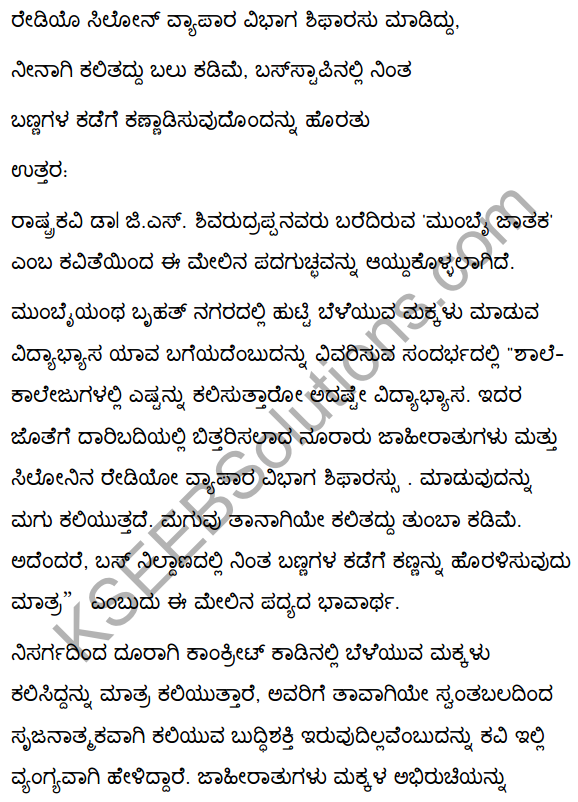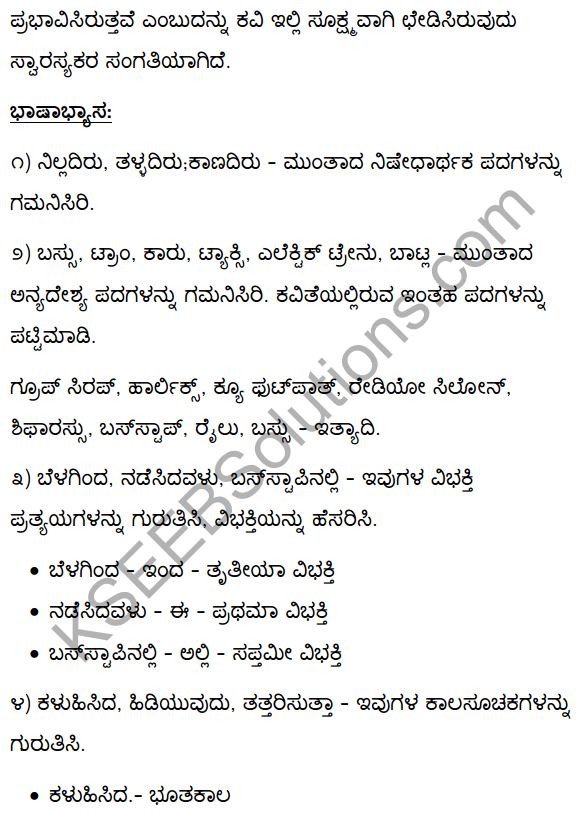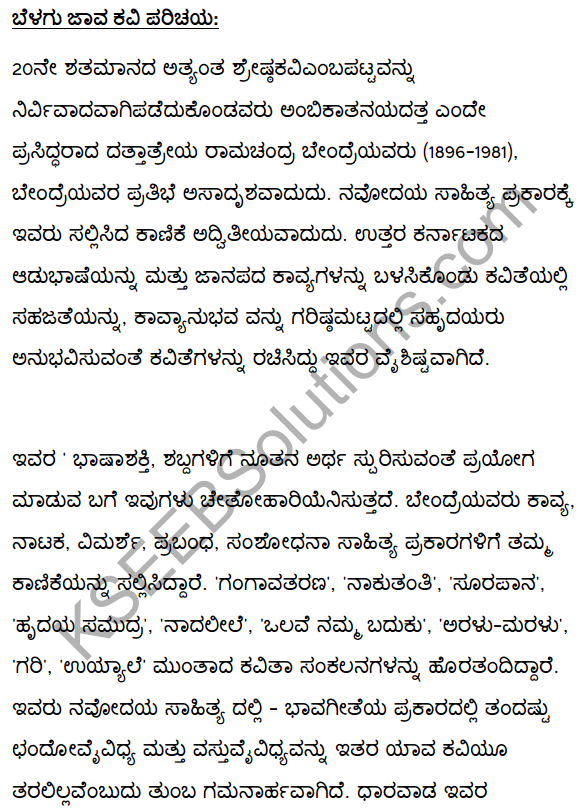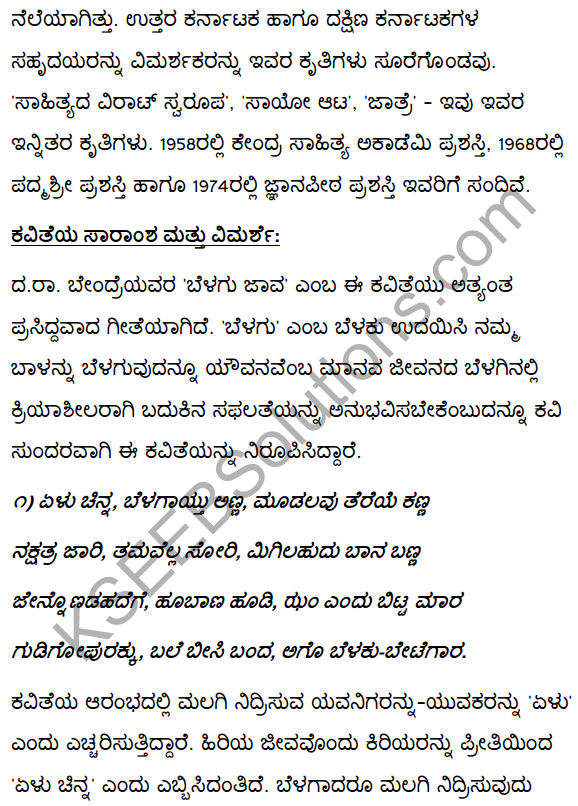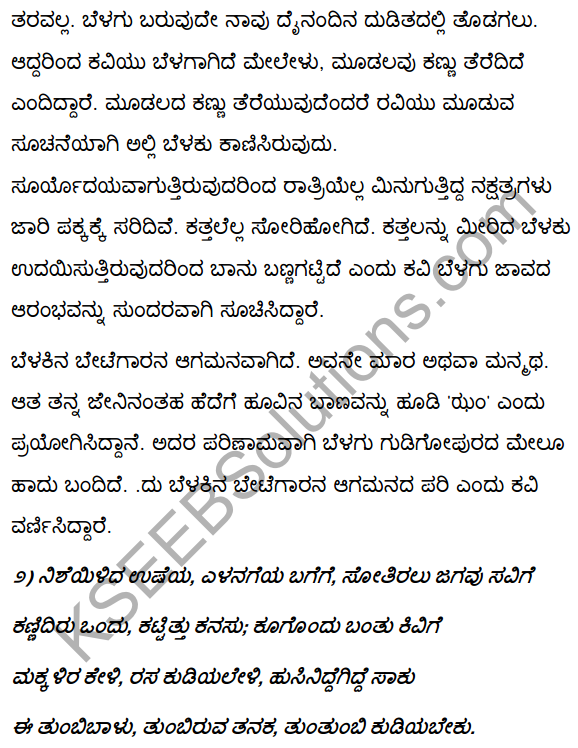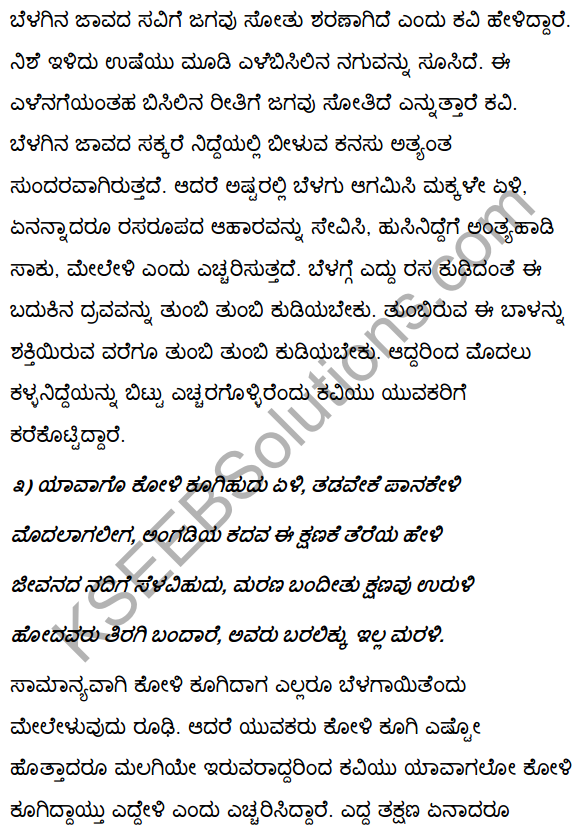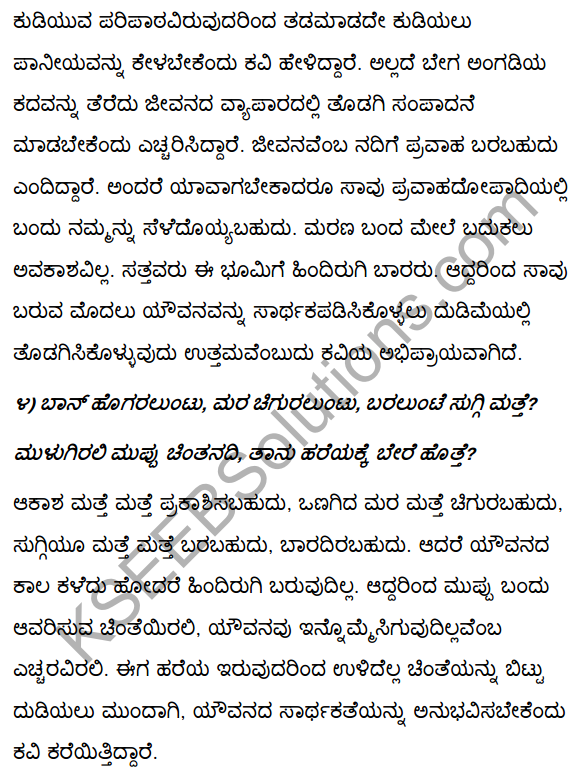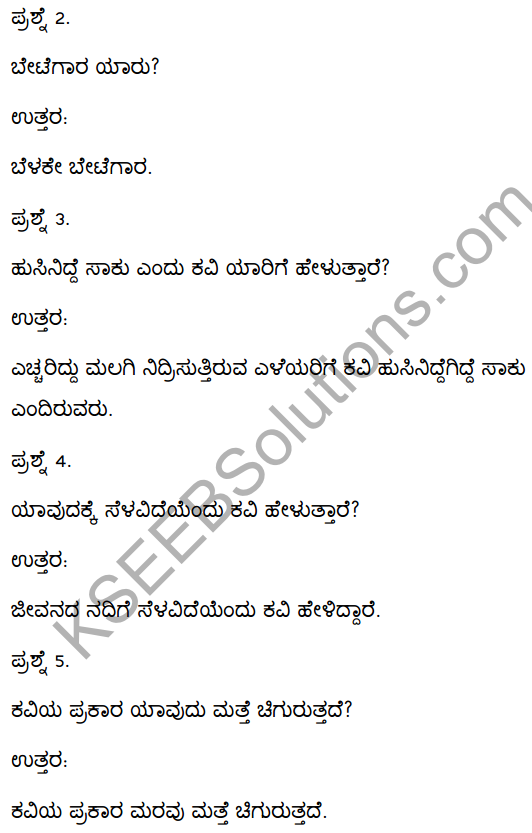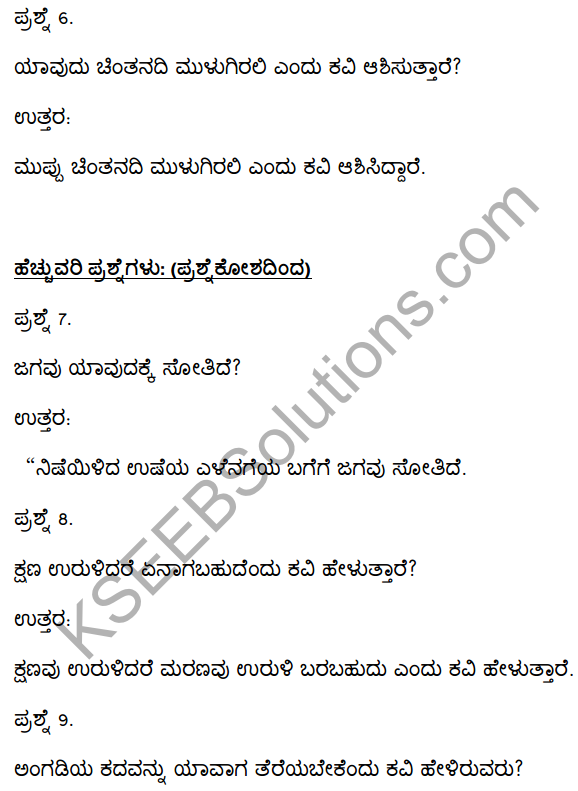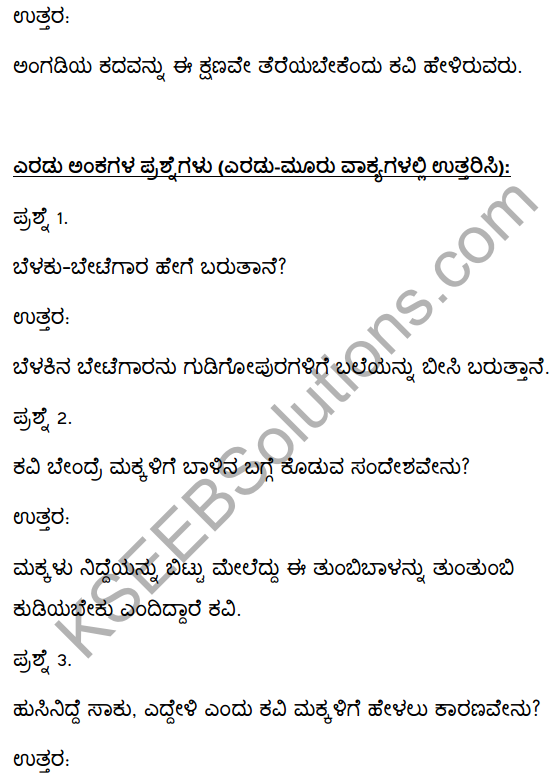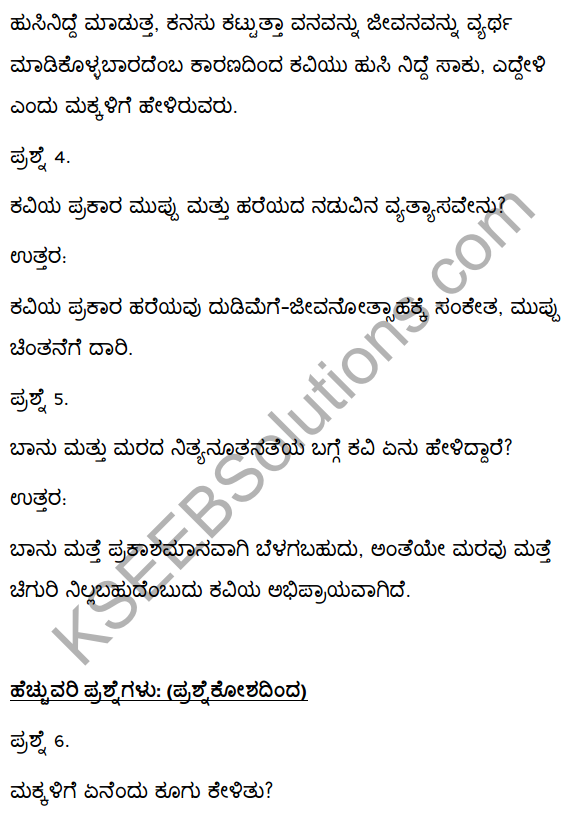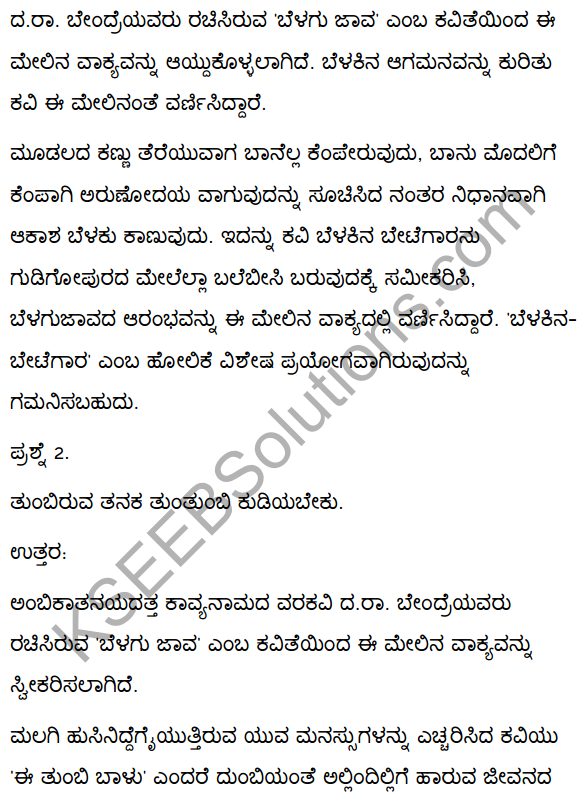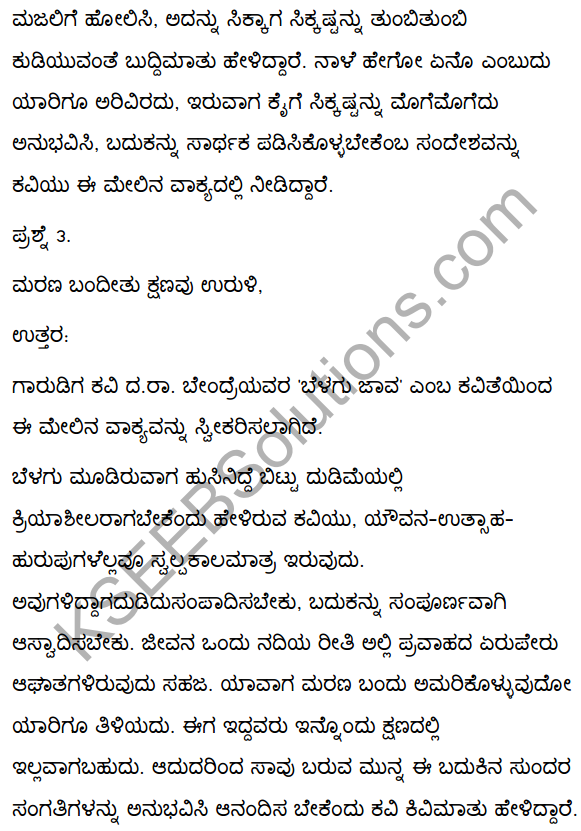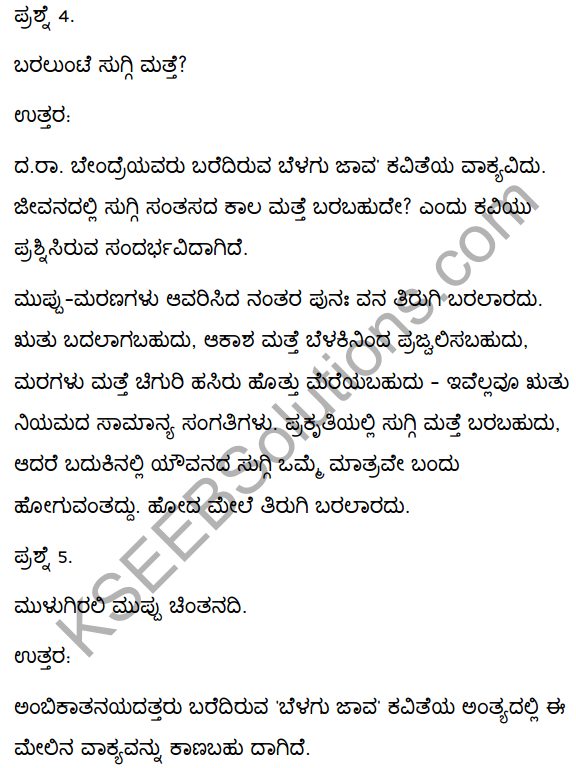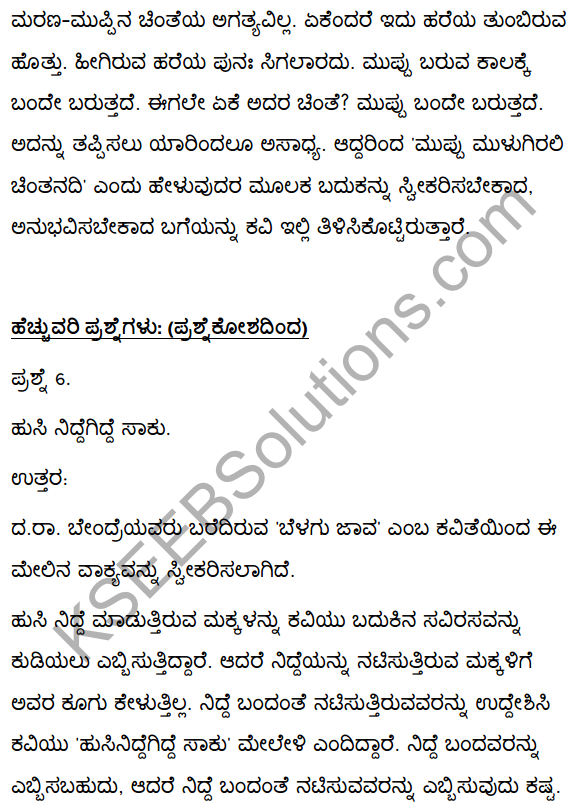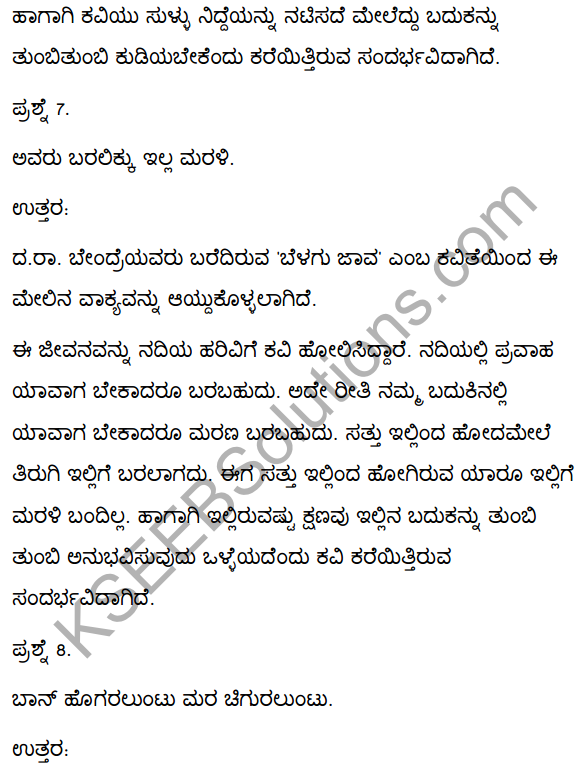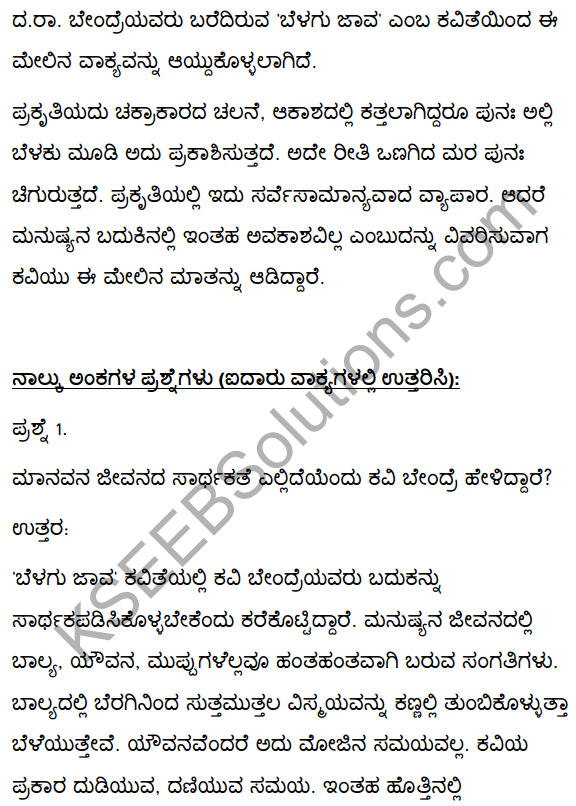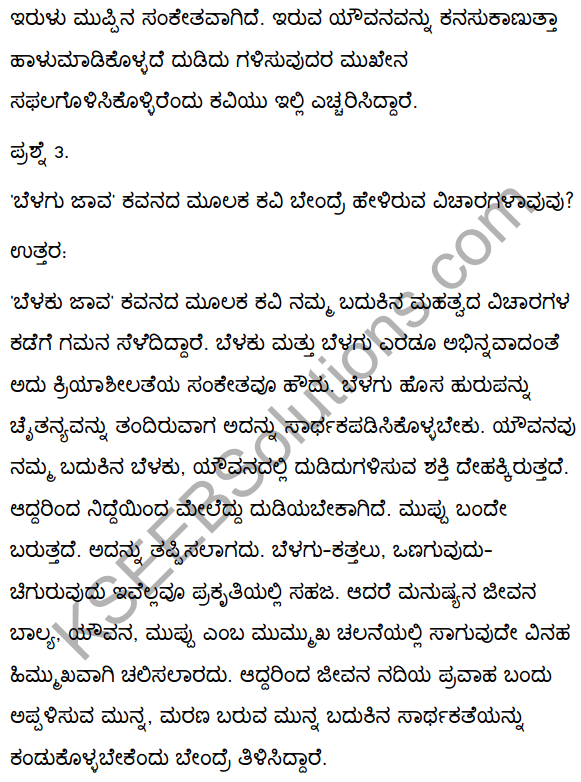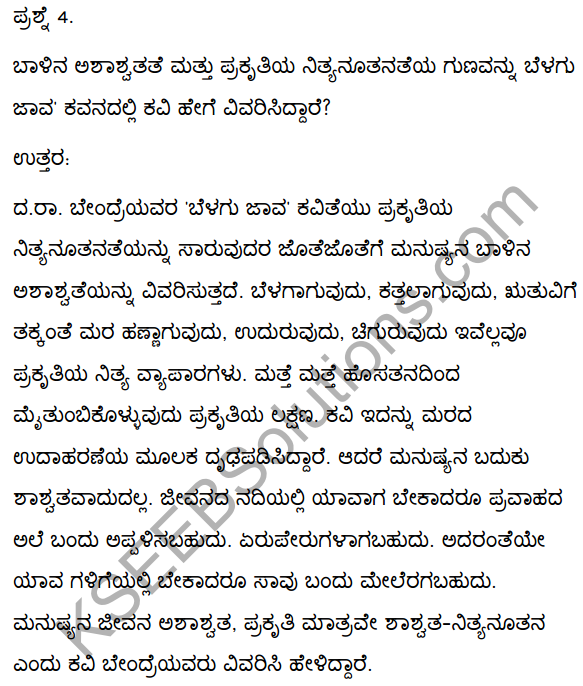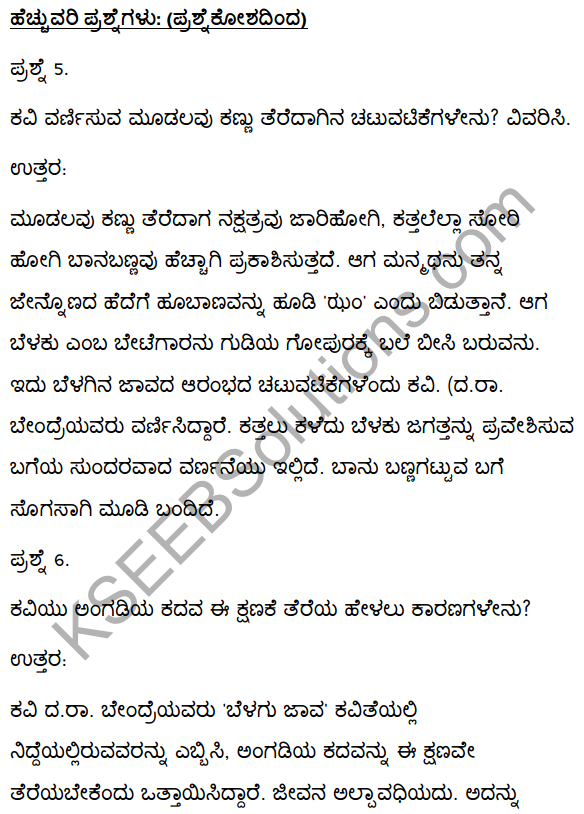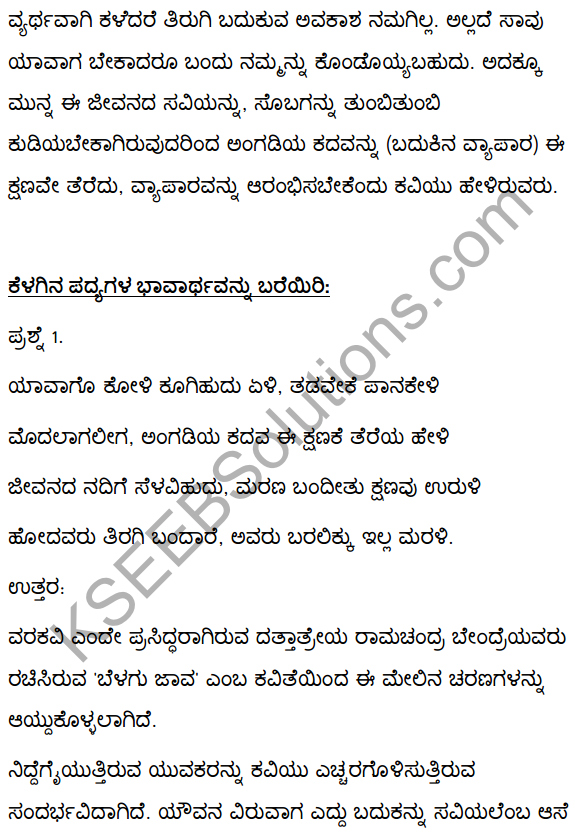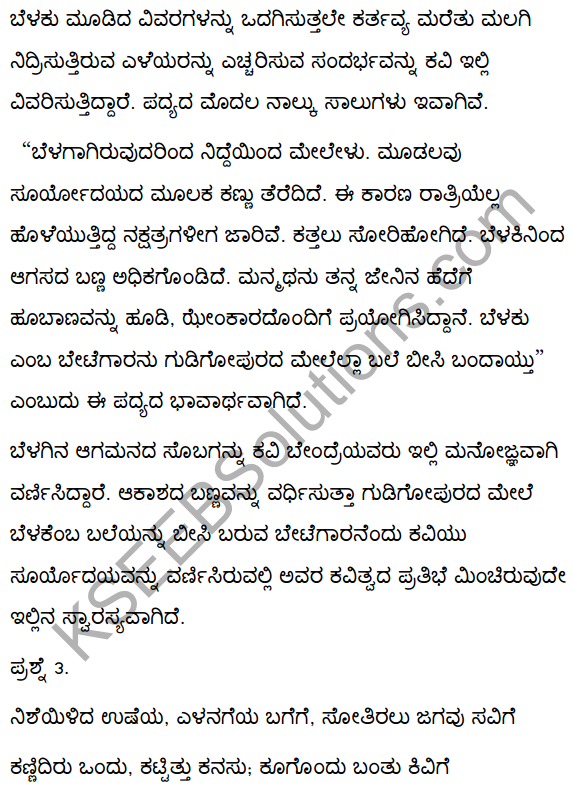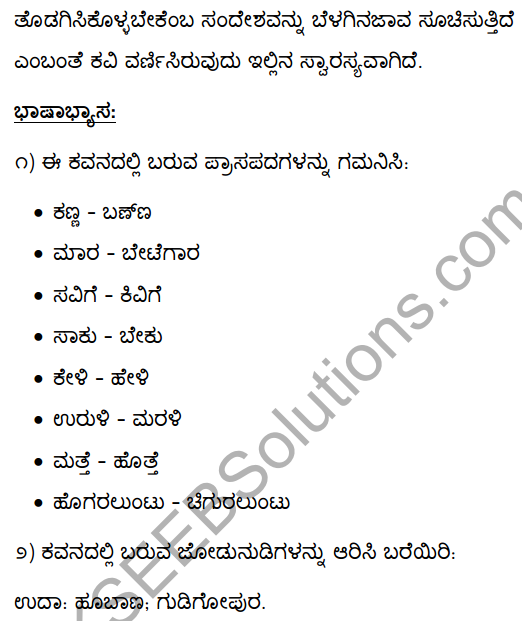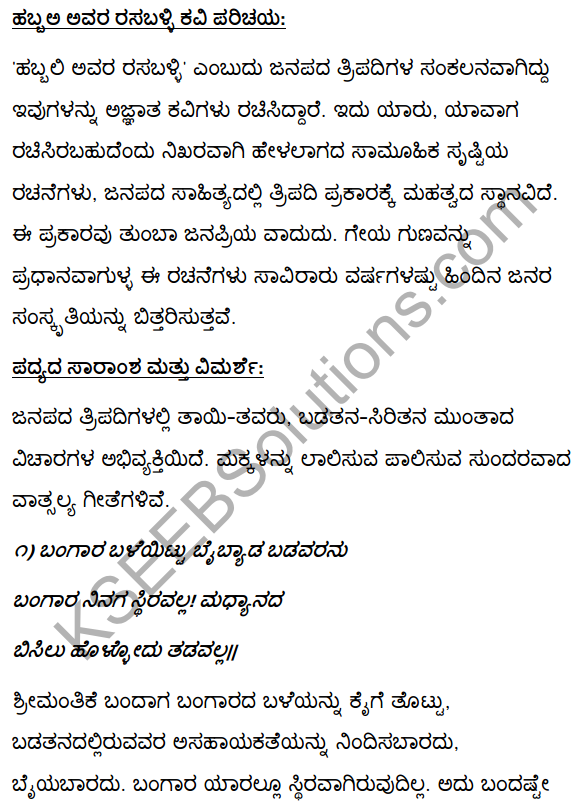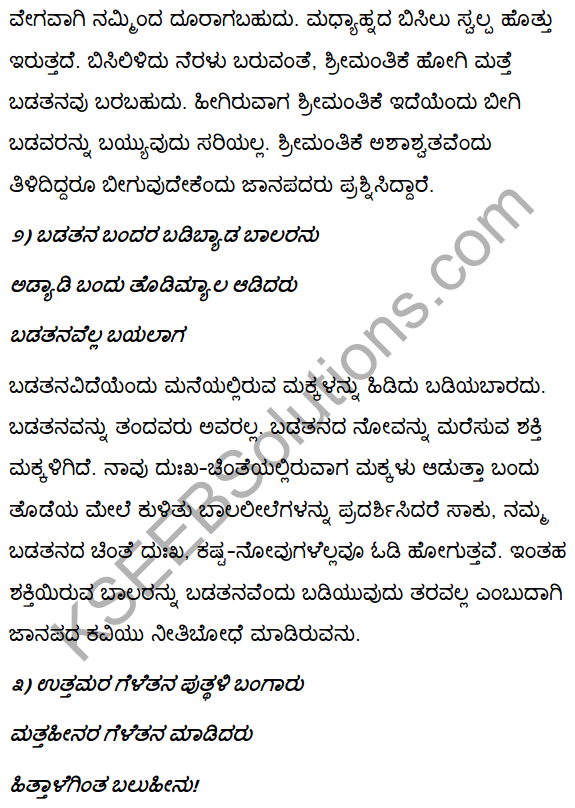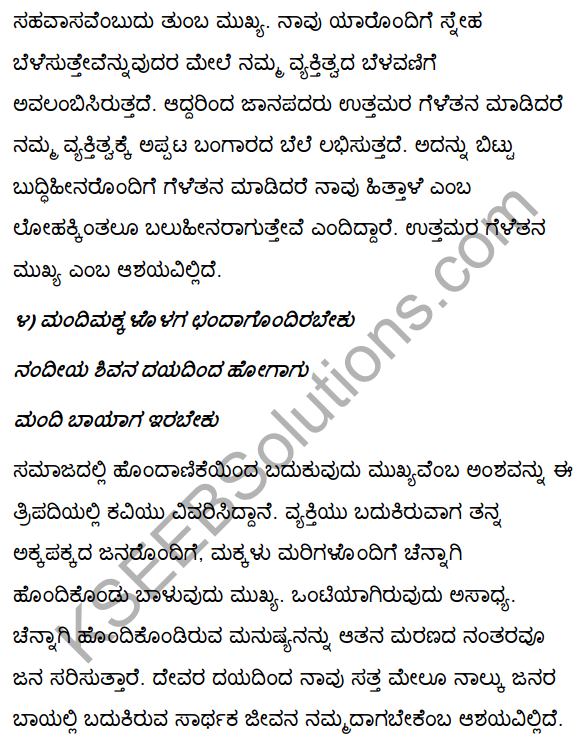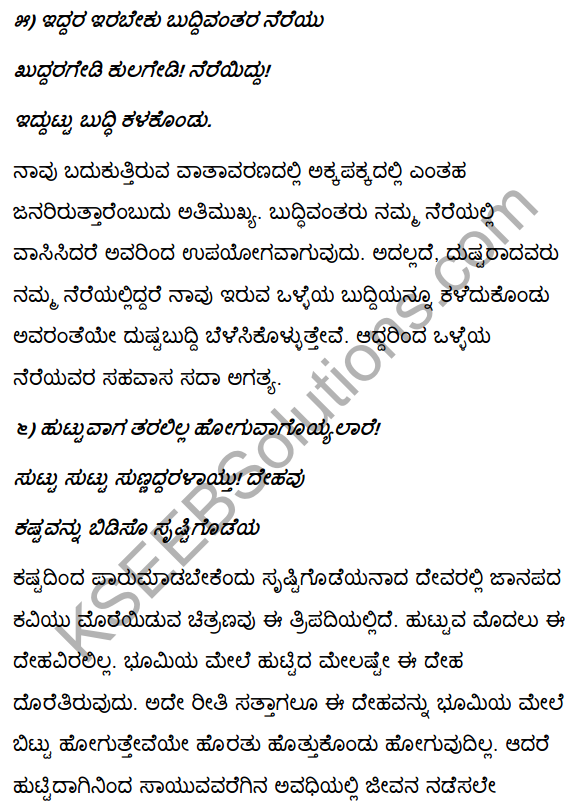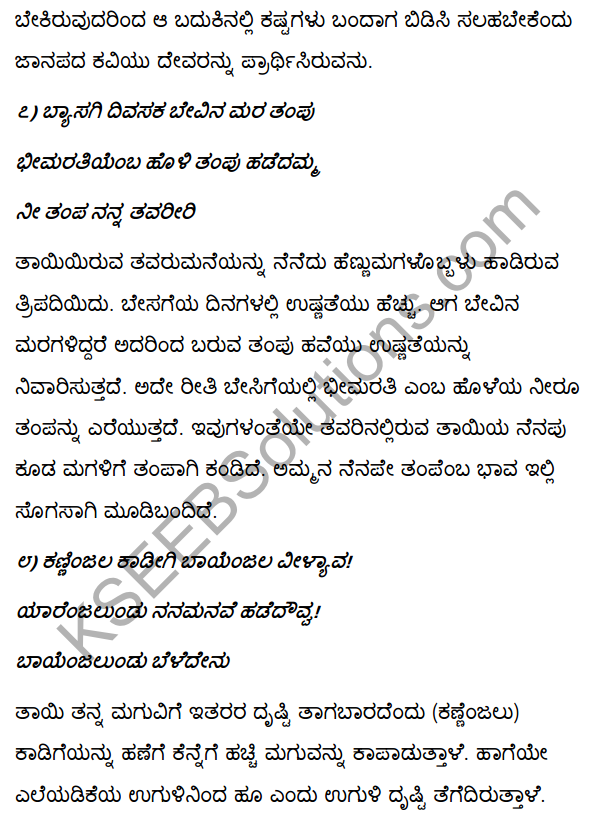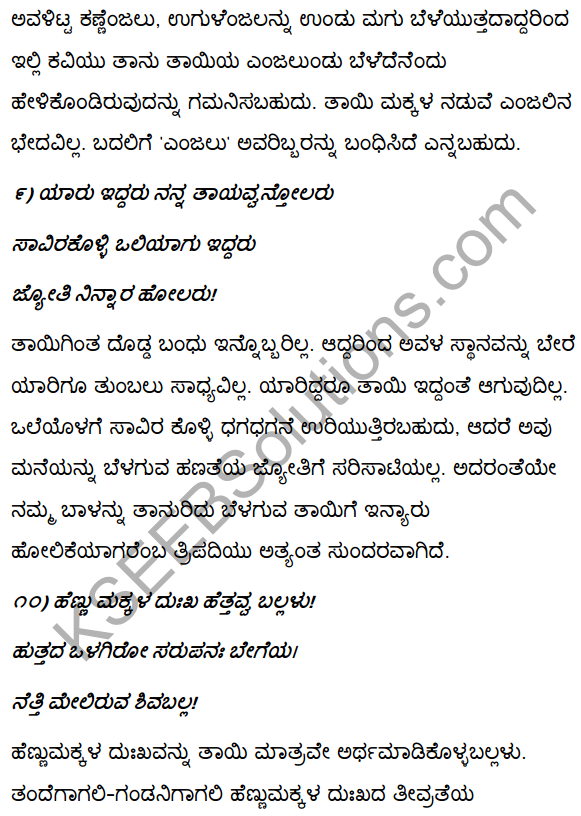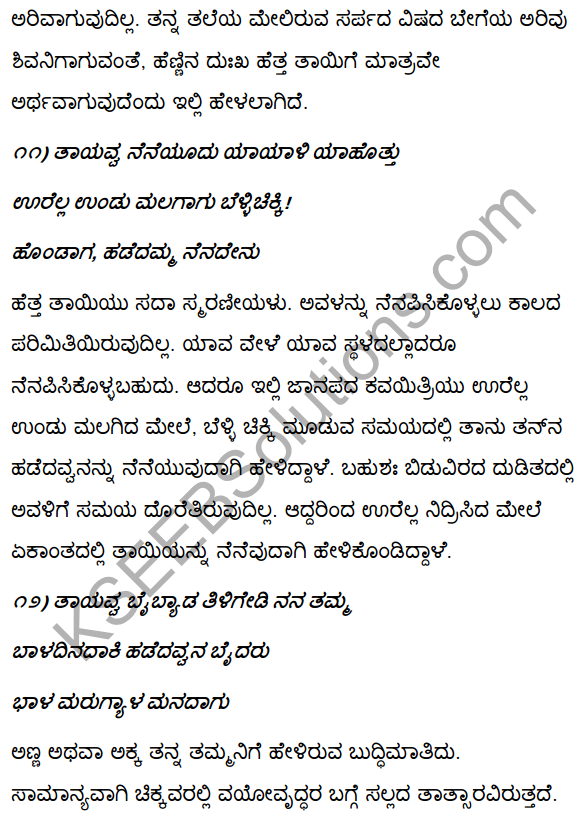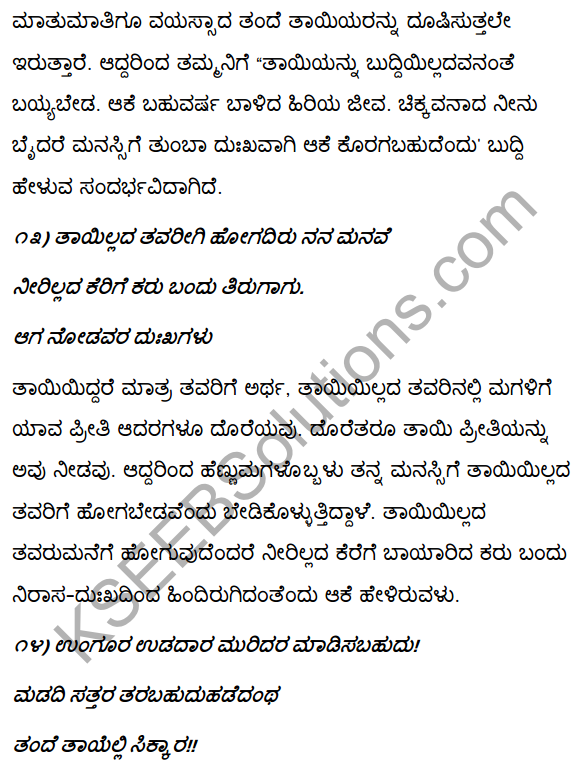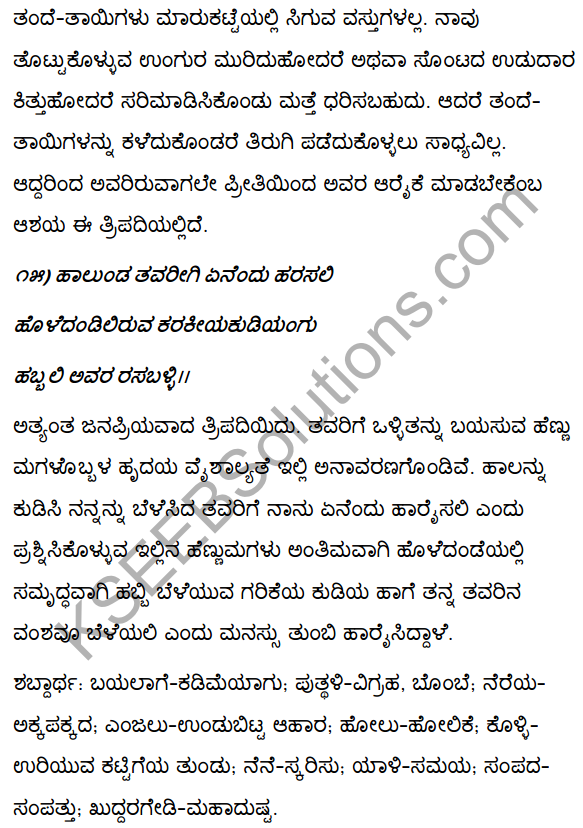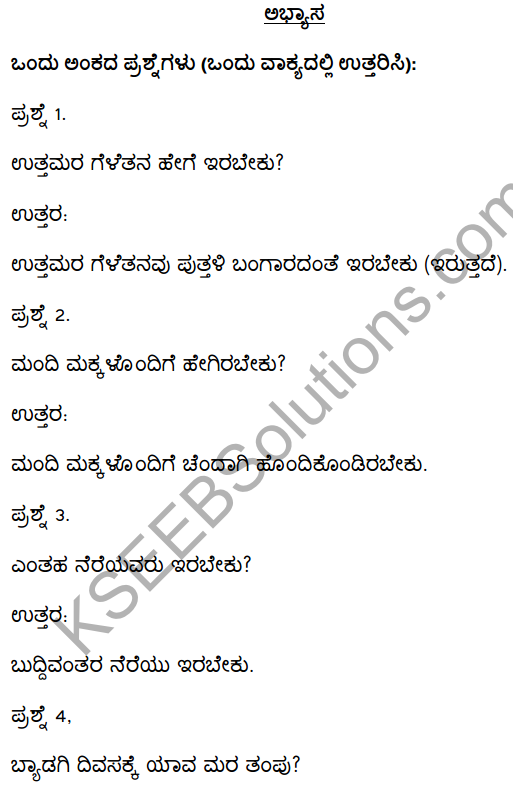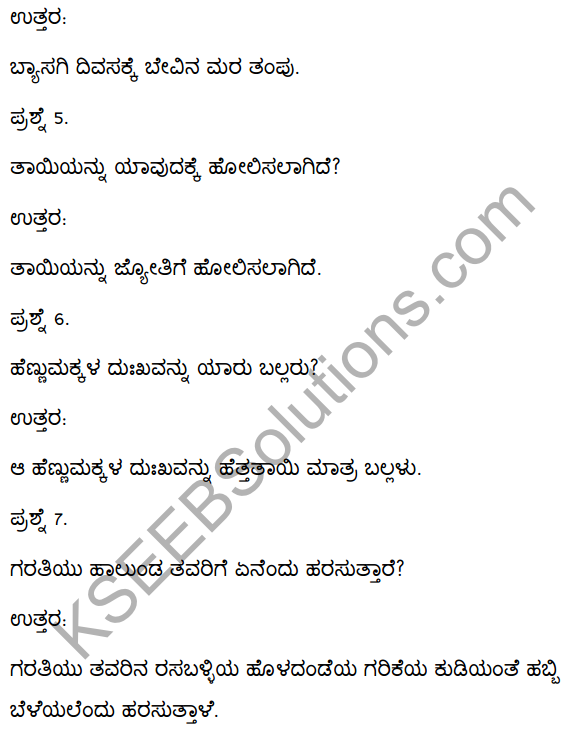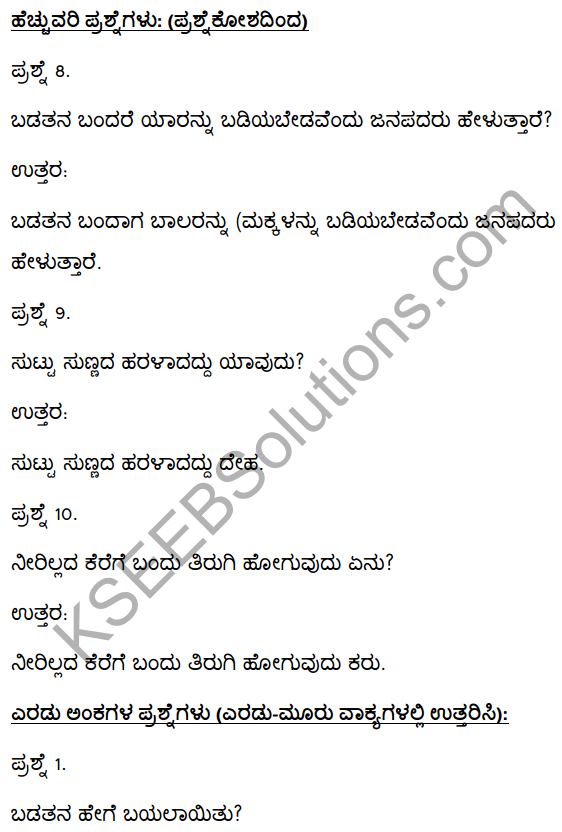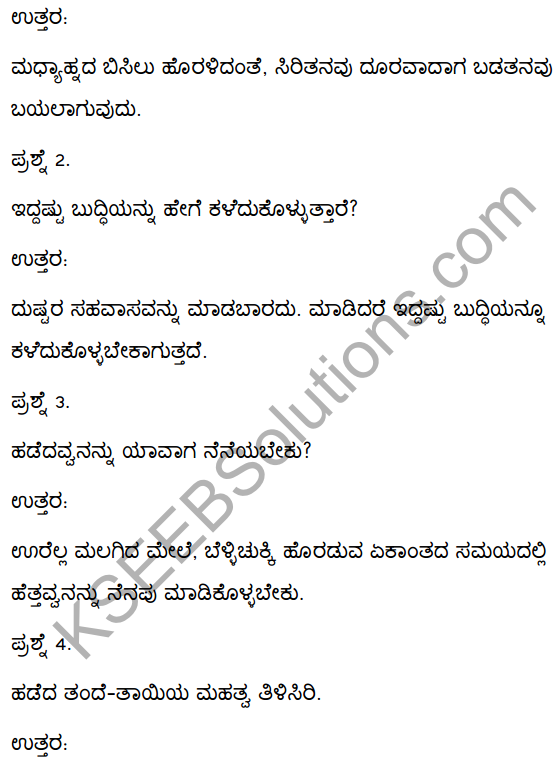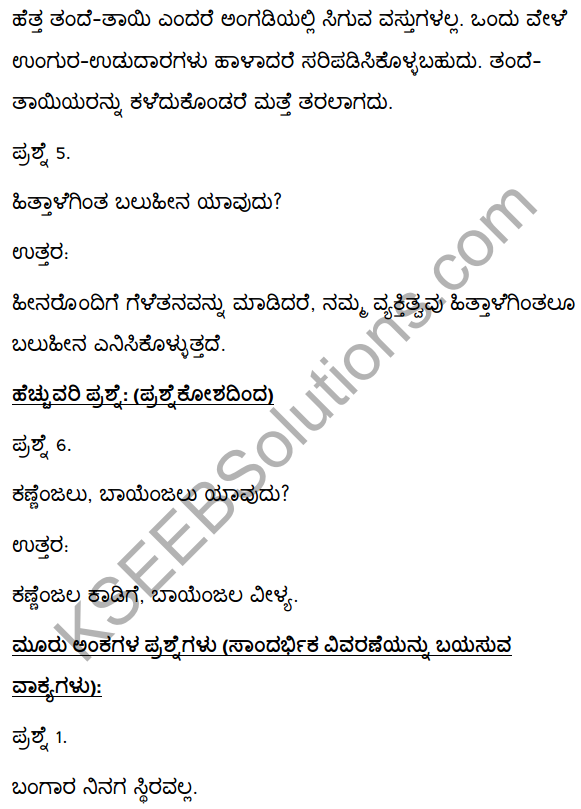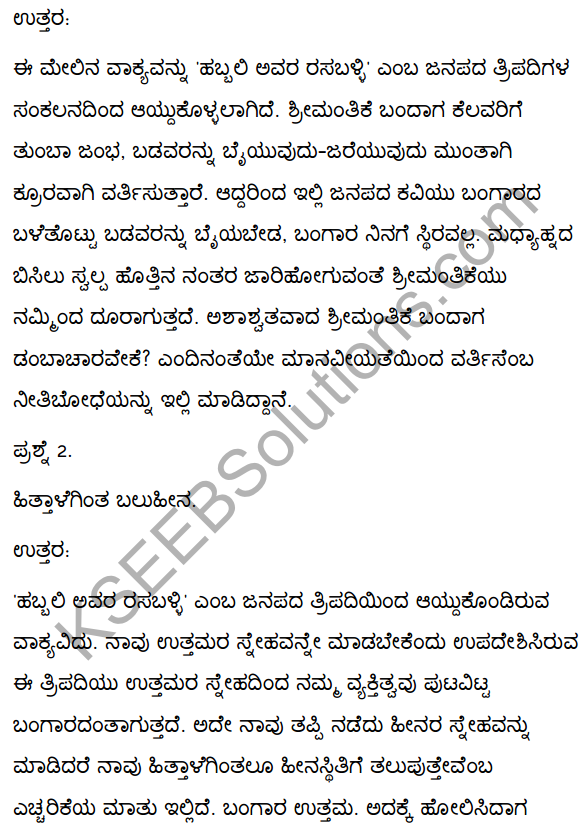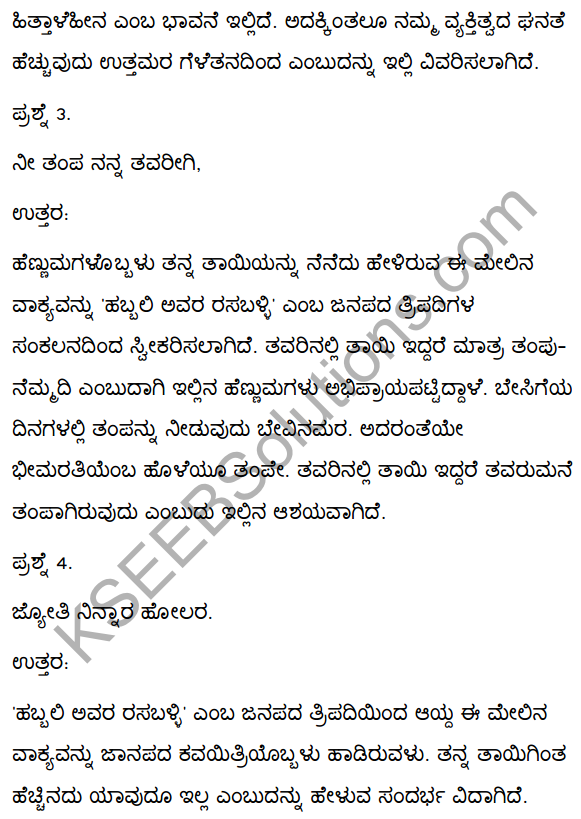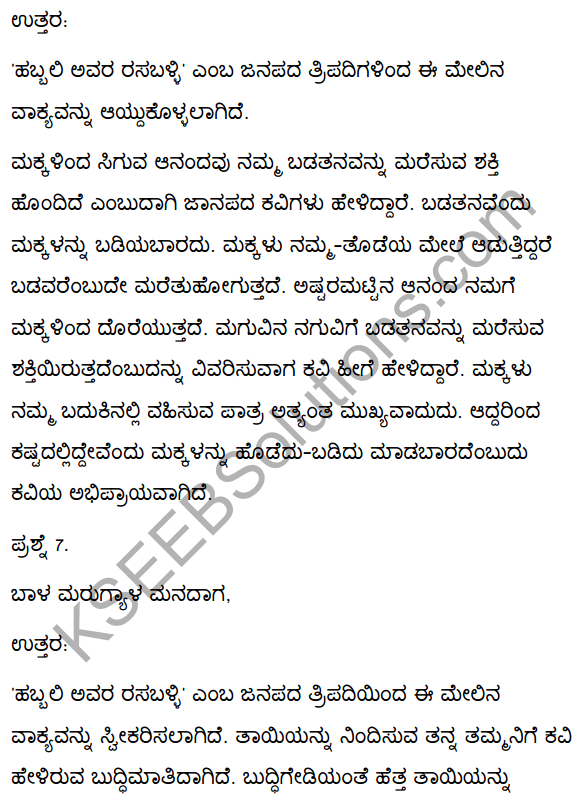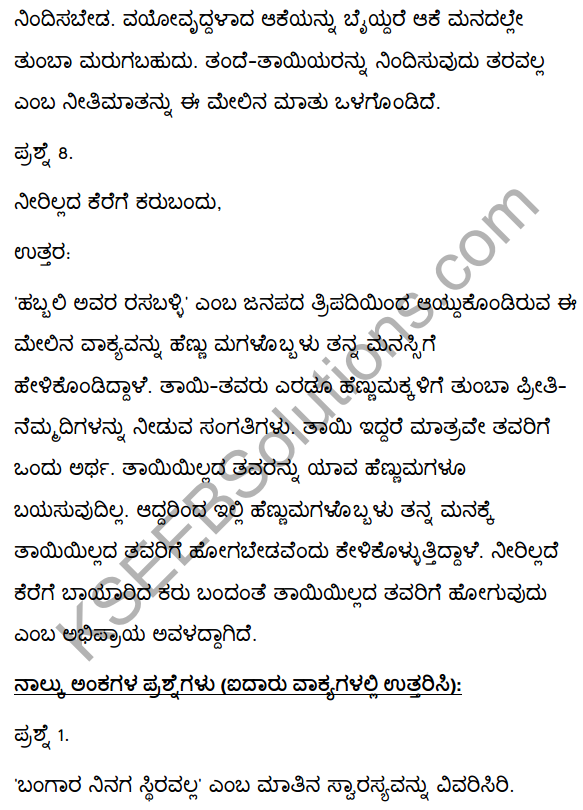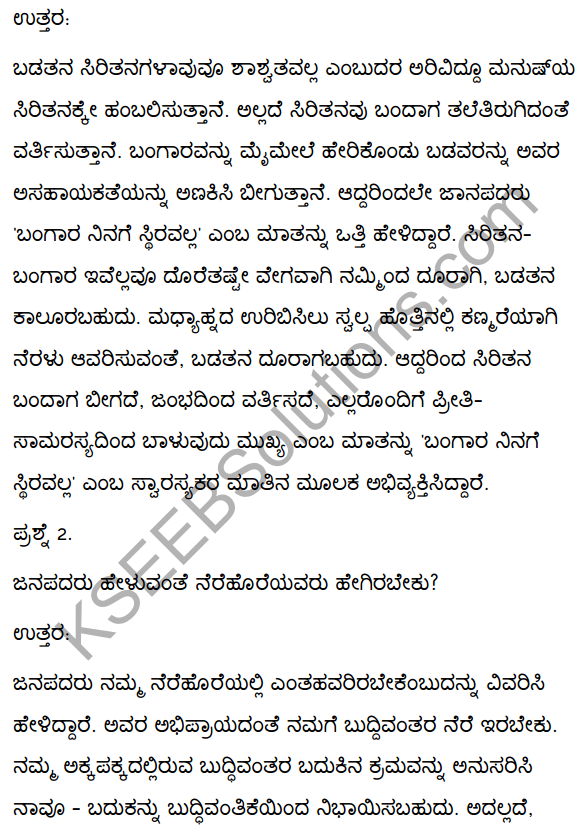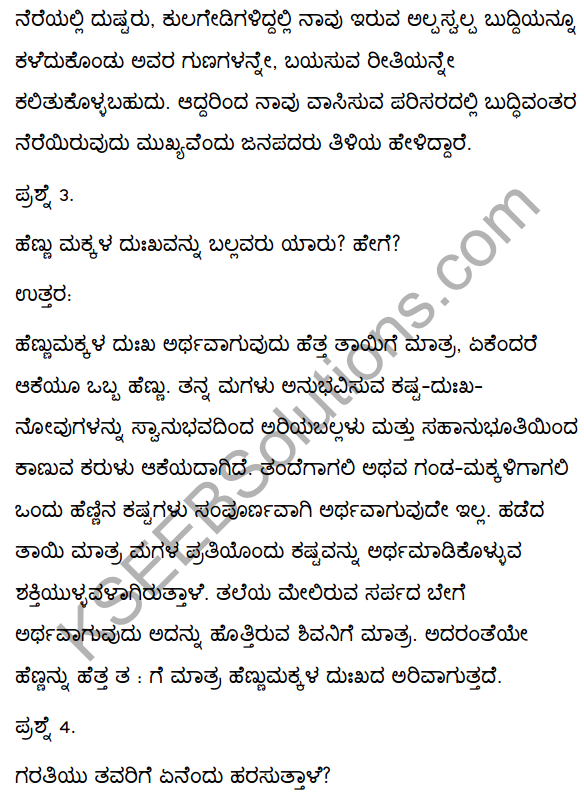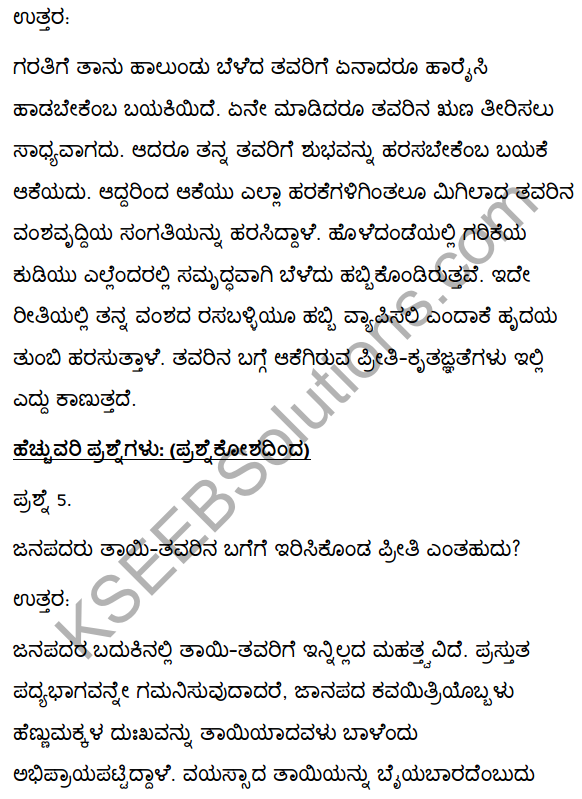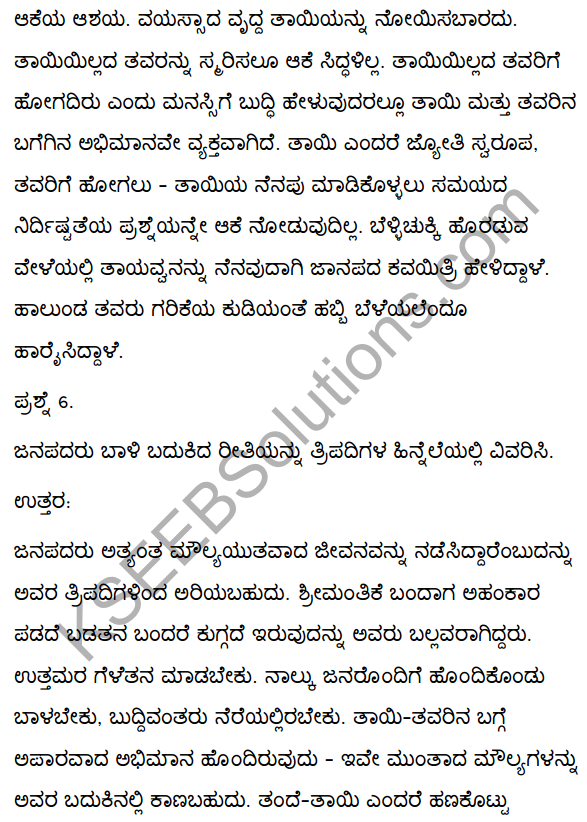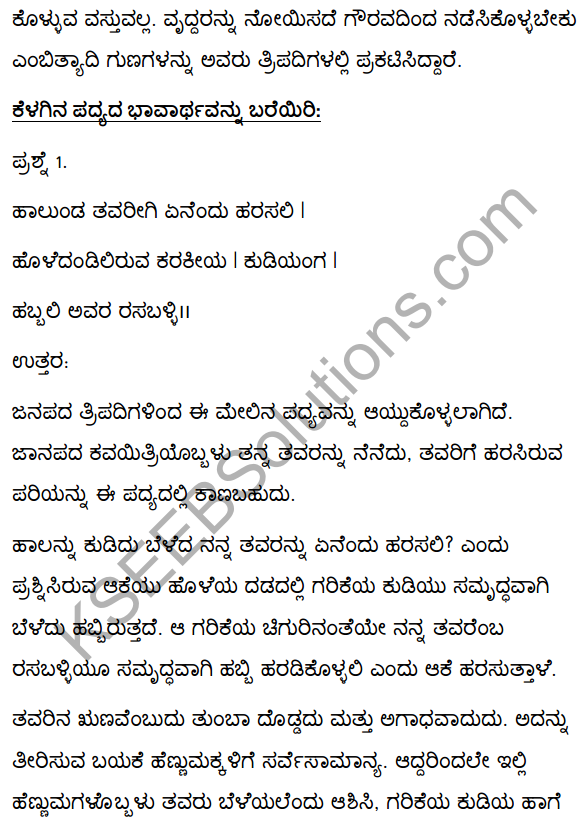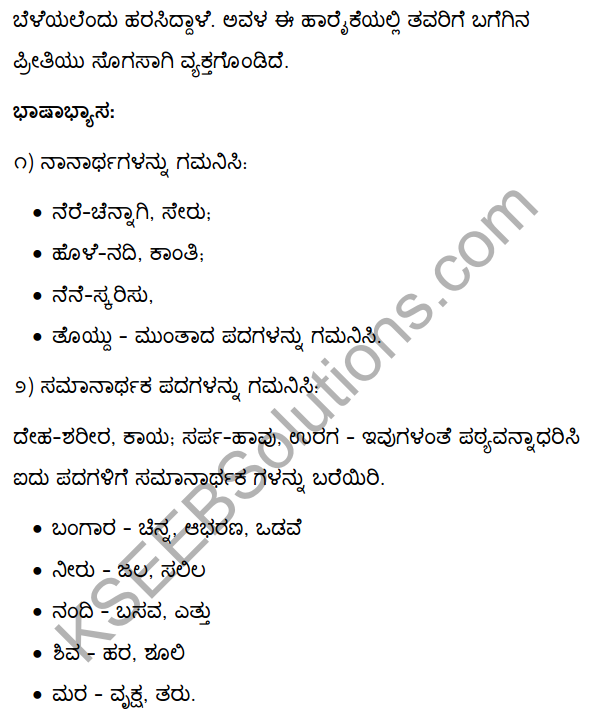Karnataka 2nd PUC Business Studies Question Bank Chapter 2 Principles of Management
You can Download Chapter 2 Principles of Management Questions and Answers, Notes, 2nd PUC Business Studies Question Bank with Answers Karnataka State Board Solutions help you to revise complete Syllabus and score more marks in your examinations.
2nd PUC Business Studies Principles of Management Text Book Exercises
2nd PUC Business Studies Principles of Management Multiple Choice Questions With Answers
Question 1.
Principles of management are not
(a) universal
(b) flexible
(c) absolute
(d) behavioural
Answer:
(c) Principles of management are not absolute as they are flexible behavioral and universal nature
Question 2.
How are principles of management formed?
Answer:
(a) In a laboratory
(b) By experiences of managers
(c) By experiences of customers
(d) By propagation of social scientists
Answer:
(b) Principles of management are formed by the experiences of managers as it provides useful insights into reality.
Question 3.
The principles of management are significant because of
(a) increase in efficiency
(b) initiative
(c) optimum utilization of resources
(d) adaptation to changing technology
Answer:
(c) Principles of management are significant because they help in increasing overall efficiency.
Question 4.
Henry Fayol was a
(a) social scientist
(b) mining engineer
(c) accountant
(d) production engineer
Answer:
(b) Henry Fayol was a mining engineer and management theorist.
![]()
Question 5.
Which of the following statements best describes the principle of ‘Division of Work’?
(a) Work should be divided into small tasks
(b) Labour should be divided
(c) Resources should be divided among jobs
(d) It leads to specialisation
Question 6.
‘She/He keeps machines, materials, tools etc. ready for operations by concerned workers’. Whose work is described by this sentence under functional foremanship?
(a) Instruction card clerk
(b) Repair boss
(c) Gang boss
(d) Route clerk
Answer:
(c) Gang boss, keeping machines and tools.
Question 7.
Which of the following is not a Principle of management given by Taylor?
(a) Science, not rule of the thumb
(b) Functional foremanship
(c) Maximum not restricted output
(d) Harmony not discord
Answer:
(b) Taylor advocated separation of planning and execution functions. This concept is known as functional foremanship.
Question 8.
Management should find ‘One best way’ to perform a task. Which technique of scientific management is defined in this sentence?
(a) Time study
(b) Motion study
(c) Fatigue study
(d) Method study
Answer:
(d) The technique of method study which is to find out one best way of doing a job.
Question 9.
Which of the following statements best describes ‘Mental Revolution’?
(a) It implies change of attitude
(b) The management and workers should not play the game of one upmanship
(c) Both management and workers require each other
(d) Workers should be pain more wages
Answer:
(a) Mental revolution implies change in the attitude of workers and management towards one another.
Question 10.
Which of the following statements is false about Taylor and Fayol?
(a) Fayol was a mining engineer whereas Taylor was a mechanical engineer
(b) Fayol’s principles are applicable in specialised situations whereas Taylor’s principles have universal application
(c) Fayol’s principles were formed through personal experience whereas Taylor’s principles were formed through experimentation
(d) Fayol’s principles are applicable at the top level of management whereas Taylor’s principles are applicable at the shop floor
Answer:
(b) Because Fayol’s principles are universally applicable whereas Taylor’s principles are applied in special situations.
![]()
2nd PUC Business Studies Principles of Management Short Answer Type Questions With Answers
Question 1.
How is the Principle of ‘Unity of Command’ useful to management? Explain briefly.
Answer:
Principle of ‘Unity of Command’ implies that each and every subordinate should have one and
only one boss. Orders and instructions should come from only one head. This helps the working of any organisation in the following manner
- Authority responsibility relationship is clearly defined.
- Subordinates know to whom they are accountable.
- Discipline and order are maintained.
Question 2.
Define scientific management. State any three of its principles.
Answer:
Scientific management can be defined as knowing exactly what you want from your men to do and seeing that they do it in the best and cheapest way.
Scientific management aims at choosing the best method to get the maximum output from the workers. The principles of scientific management are mainly applicable at the shop-floor level.
Three main principles of scientific management are as follows :
1. Science, not Rule of Thumb: When different managers use their own different methods to get the work done, it is rule of thumb. Taylor believed that there was only one best method to maximise efficiency. Taylor advised that every organisation should compare the results of different methods, test them again and again and finally select the best method of getting the work done.
2. Harmony, not Discord: Managers are an extension of the management and serve as a link between workers and the owners. Workers have to take instructions from the managers and managers have to get the work done through the workers. Oftentimes the relation between them is spoilt which is very harmful for everyone-workers, managers and owners. This class conflict should be replaced by harmony between the two. Both should change their thinking towards each other. Both should give importance to each other. This is known as mental revolution.
3. Co-operation, not Individualism: There should be complete co-operation between the labour and the management instead of individualism. This principle is an extension of the principle of ‘Harmony not discord.’ The management and the workers should not compete with each other, rather co-operate with each other. Management should consider all good suggestions made by the employees which can help in cost reduction. At the same time, workers should never think of going on strikes in order to get their unreasonable demands fulfilled.
Question 3.
If an organisation does not provide the right place for physical and human resources in an organisation, which principle is violated? What are the consequences of it?
Answer:
The principle of order is violated if an organisation does not provide the right place for physical and human resources.
If this principle is violated then,
- Lots of time will be wasted in locating the different resources.
- This will lead to delayed decisions.
- Wastage of energy which will lead to inefficiency and delay in production.
- causes hindrance in the activities of business.
Question 4.
Explain any four points regarding significance of Principles of management.
Answer:
Significance of Principles of management is briefly as follows :
1. Providing Managers with useful insights into Reality: When managers follow principles, it adds to their knowledge, ability and understanding of managerial situations and circumstances. This improves managerial efficiency e.g. when managers use principle of delegation then they get more time to concentrate on critical areas of working.
2. Scientific Decision Making: management principles help in thoughtful decision making, They emphasise on logic rather than blind faith. Here, decisions are based on the objective assessment of the situation.
3. Optimum Utilisation of Resources and Effective Administration : Principles: These help the managers to conceptualise the net effect of their decision rather than going for trial and error method resulting in saved time, efforts and energy thereby increased productivity.
4. Management Training, Education and Research: Principles of management are the base for management theory. As such they are used as a basis for management training, education and research. These principles provide basic groundwork for the development of management as a subject. Professional courses like BBA, MBA also teach these principles as part of their curriculum.
Question 5.
Explain the principles of ‘scalar chain’ and gang plank.
Answer:
The formal lines of authority from highest to lowest ranks are known as scalar chain principles.
According to Fayol, “Organisations should have a chain of authority” and communication that runs from top to bottom and should be followed by managers and the subordinates.
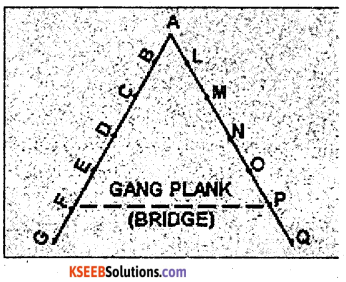
According to Fayol, this chain should not be violated in the normal course of formal communication. However if there is an emergency, Gang Plank is used for speedy communication as shown in the diagram.
Gang plank is a shorter route in a scalar chain which allows employees at the same level to communicate with each other directly.
Gang plank should be used only in case of emergency, to facilitate speedy co-ordination and to prevent any likely distortion of message.
![]()
2nd PUC Business Studies Principles of Management Long Answer Type Questions With Answers
Question 1.
Define Scientific Management. Explain the principles of scientific management of F.W.Taylor.
Answer:
Principles of Scientific management are:
(a) Science, not Rule of thumb: He believes that there was only one best method to maximize efficiency i.e scientific management. It increases production by reducing the efforts of employees. It includes scientific selection of workers, placement and training, gradation of machinery etc.
(b) Harmony, not discord: There should be harmonious relationship between management and workers. They should transfer their thoughts in order to achieve good relationship.
(c) Cooperation, not individualism: There should be a complete cooperation between the labour and management instead of individualism. To achieve this, management has to receive suggestions from the employees and they should be rewarded for their good, work which results in cost reduction.
(d) Development of each and every person to their greatest efficiency and prosperity: According to Taylor, efficiency could be achieved from the beginning of employees selection. Each person should be scientifically selected and training should be given. This will help in bringing out a Worker’s efficiency.
(e) Optimum production: Scientific management involves increase in production. Taylor opposed the inefficiency of workers and reducing production. He favored large scale production.
Question 2.
Explain the following principles of management given by Fayol with examples.
(a) Unity of direction
(b) Equity
(c) Espirit de Corps
(d) Order
(e) Centralisation and decentralisation
(f) Initiative
Answer:
Fayol introduced general principles of management. Some of them have been explained below
(a) Unity of Direction : All the units of an organisation should be moving towards the same objective. Each group of activities having the same objective must have one head and one plan. If a company is manufacturing both motor cycles and cars, then it should have two separate divisions for both of them. Each division should have its own in charge. Plans and execution resources. Their working should not overlap.
(b) Equity : This principle emphasises kindliness and justice in the behaviour of managers towards workers. This will ensure loyalty and devotion. Lazy personnel should be dealt sternly and strictly. There should be no discrimination against anyone on account of gender, religion, caste, language or nationality. All decisions should be merit based. Now a days we see in multinational companies, people of various nationalities work together in a discrimination free environment. For example, India born CEO Rajat Gupta heads Mckinsey Inc.
(c) Espirit de Corps: This principle emphasises on building harmony and team spirit among employees. In a large organisation with a large work force, teamwork is very important. Teamwork leads to better co-ordination while working. The head of each team should give credit for good result to the whole team rather than confining it to themselves.
(d) Order: A place for everything and everyone in his/her place. Basically it means orderliness. If there is a fixed place for the different things in a factory and they remain in their places, then no time is wasted in locating them. In the same way if every personnel is allocated an area to operate from then their co-workers, head or subordinates, can contact them easily.
(e) Centralisation and Decentralisation: Concentration of decision making authority in a few hands is centralisation and its dispersal among more number of people is decentralisation. Fayol believed that an organisation should not work with anyone of them in isolation A combination of both is important. Simple, easy and routine work should be decentralised and critical important – work should be centralised
In our country village panchayats have been given more powers to decide and spend funds granted to them by the Government, for the welfare of their concerned villages. This is decentralisation at the national level.
(f) Initiative: Initiative means taking the first step with self-motivation. Workers should be encouraged to develop and carry out their plans for improvements. According to Fayol, initiatives should be encouraged. A good company should invite suggestions from employees which can result in substantial cost/time reduction. Rewards can be given to fruitful suggestions.
![]()
Question 3.
Explain the technique of ‘Functional Foremanship’ and the concept of ‘Mental Revolution’ as enunciated by Taylor.
Answer:
Functional Foremanship : Taylor advocated separation of planning and execution functions. This concept was extended to the lowest level of the shop floor. It was known as functional foremanship.
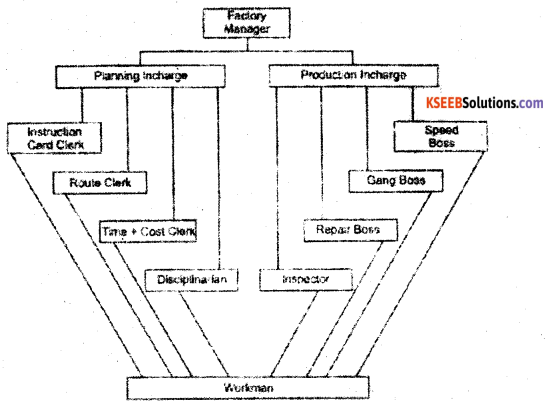
Under the factory manager, there is a planning incharge and a production incharge.
Under the planning incharge, the work goes as follows
- Instruction Card Clerk drafts instructions for the workers,
- Route Clerk specifies the route of production.
- Time and Cost Clerk prepares time and cost sheet.
- Disciplinarian ensure discipline.
Under the production incharge, the work goes as follows\
- Speed Boss takes care of timely and accurate completion of work.
- Gang Boss keeps tools and machines ready for operation by workers.
- Repairs Boss ensures proper working conditions of machines.
- Inspector checks the quality of work.
Mental Revolution
In a factory, the managers served as a link between the owners and the workers The managers have to get the work done from the workers which created sometimes problem between the two. Taylor emphasized that there should be harmony between the management and workers Both should realise that each one is important. For this, both had to change their thinking about each other, This is known as ‘Mental Revolution’. Management should share the gains of the company with the workers and at the same time workers should work hard and be ready to accept any change made for the betterment of the organisation.
Question 4.
Discuss the following techniques of scientific work study
(a) Time study
(b) Motion study
(c) Fatigue study
(d) Method study
(e) Simplification and standardisation of work
Answer:
(a) Time Study : It determines the standard time taken to perform a well-defined job. The standard time is fixed for the whole of the task by taking several readings. The method of time study will depend upon volume and frequency of the task, the cycle time of the operation and time measurement costs.
There are three objectives achieved through time study
- Determine the number of workers
- Frame suitable incentive schemes
- Determines labour costs.
e. g. If the standard time taken to do a piece of work is 20 minutes, then one such work can be done 3 times in an hour and 21 times (7 hrs working) in a single day.
(b) Motion Study : Motion study refers to the study of movements like lifting putting objects, sitting and changing positions. On close examination of body motions it is possible to categorize three types of motions
- Motions which are productive.
- Motions which are incidental.
- Motions which are unproductive.
Out of the above three, workers are motivated to eliminate the third type completely and reduce the second one to the minimum This helps in increasing the productivity
(c) Fatigue Study: Fatigue study seeks to determine the amount and frequency of rest intervals in completing a task. A person is bound to feel tired physically and mentally if he does not take rest while working. The rest intervals will help one to regain stamina and work again with the same efficiency. For e.g., in an organisation working hours are 9 to 5. There is a lunch break of an hour for the workers to take rest. Similarly in a school, there is a break for the students and teachers after 4 periods of continuous learning.
(d) Method Study: The objective of method study is to find out one best way of doing the job. Different managers would use their own methods of getting the work done. But there is always one best method. Right from procurement of raw materials till the final product is delivered to the customer every activity is the part of method study. The objective of whole exercise is to minimise the cost of production and maximise the satisfaction of the customer.
(e) Simplification and Standardisation of Work: Standardisation refers to the process of setting standards for every business activity e.g., process, raw material, time, product, machinery, methods or working conditions. The objective of standardisation are
- To reduce product to fixed types, sizes, features etc.
- To establish interchangeability of various parts.
- To establish standards of excellence and quality in materials.
- To establish standards of performance of men and machines.
Simplification aims at eliminating unnecessary diversity of products. It results in savings of cost of labour, machines and tools. It implies reduced inventories, fuller utilisation of equipment and increasing turnover.
![]()
Question 5.
Discuss the differences between the contributions of Taylor and Fayol
Answer:
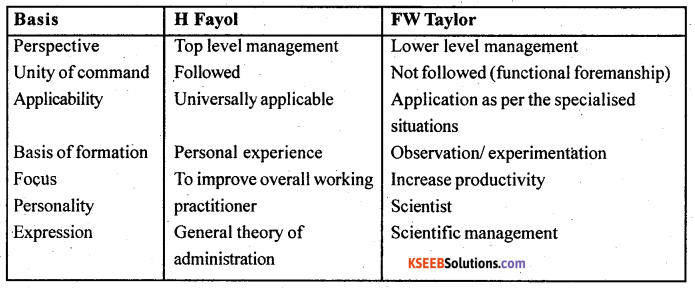
Question 6.
Discuss the relevance of Taylor and Fayol’s contribution in the contemporary business environment.
Answer:
Relevance of Taylor and Fayol’s contribution in the contemporary business environment. Both Fayol and Taylor have given principles of management to improve efficiency in an organisation. Taylor gave us scientific principles of management which are being adopted by all organisations to improve productivity at the shop floor level, the principles help in giving effective results. In the same manner, Henry Fayol gave general principles of management which when implemented at any of the levels-top, middle or lower help in achieving better co-ordination, remove ambiguity and encourage the employees to improve their work performance.
2nd PUC Business Studies Principles of Management Case Problems Studies
2nd PUC Business Studies Principles of Management Case Problems Studies 1
Question 1.
‘F’ limited was engaged in the business of food processing and selling its products under a popular brand. Lately the business was expanding due to good quality and reasonable prices. Also with more people working the market for processed food was increasing. New players were also coming to cash in on the new trend. In order to keep its market share in the short run the company directed its existing workforce to work overtime.
But this resulted in many problems. Due to increased pressure of work, the efficiency of the workers declined. Sometimes the subordinates had to work for more than one superior resulting in declining efficiency. The divisions that were previously working on one product were also made to work on two or more products. This resulted in a lot of overlapping and wastage. The workers were becoming undisciplined.
The spirit of teamwork, which had characterised the company previously, was beginning to wane. Workers were feeling cheated and initiative was declining. The quality of the products was beginning to decline and market share was on the verge of decrease. Actually the company had implemented changes without creating the required infrastructure.
1. Identify the Principles of Management (out of 14 given by Henry Fayol) that were being violated by the company.
Answer:
The Company violated the following principles.
a. Division of work
b. Unity of command
c. Unity of direction
d. Discipline
e. Subordination of individual interest to general interest
f. Order
g. Initiative
h. Remuneration
Question 2.
Explain these principles in brief.
Answer:
a. Division of Work: As per this case, work was not divided among the workers as per their specialisation. Specialisation is the most efficient way to use human efforts and produces more and better work.
b. Unity of Command: In this case subordinates had to work for more than one superior. This results in declining efficiency. As per Fayol’s principle of unity of command there should be one boss and if it is violated, it results in authority being undetermined, discipline in jeopardy, order distributed and stability threatened.
c. Unity of Direction: The units of an organisation should be moving towards the same objective. Each group must be having same objective, must have one head one plan. But in this case first the producers were working on one product then moved to two or more group. Thus, this principle was also violated.
d. Discipline: In this case, there was a lack of formalised control as the workers were working beyond there abilities. There were no rules and regulations as well as lack of employment agreement.
e. Subordination of Individual Interest to General Interest: Every individual was working better only when the organisation was giving priority to their general interest. In this case, company was focusing only over its objective and not on employees.
f. Order: People and materials must be in suitable places at appropriate time for maximum efficiency. But in this case they were not following the order of anything.
g. Initiative: It implies that workers should be self motivated, suggestions should be taken from the employees. It results in substantial cost and time reduction. But here they were taking no feedbacks and no suggestions.
h. Remuneration: The workers should get their fair wages, but here workers were performing day and night but they were not getting a fair amount for the same. This resulted that they were feeling cheated.
![]()
Question 3.
What steps should the company management take in relation to the above principles to restore the company to its past glory?
Answer:
Following steps should be taken by the company to retain its past glory
a. Work should be divided into small tasks and distributed among the employees as per their specialisation.
b. There should be one boss.
c. Functions should be performed under one head or one plan.
d. Formalised control should be maintained.
e. Proper remuneration and Impressive Incentives should be given
f. Hierarchical communication pattern is to be followed
g. Suggestions and feedback should be taken from the employees.
h. Maintain high morale among employees
2nd PUC Business Studies Principles of Management Case Problems : 2
The management of company ’F’ Limited now realised its folly. In order to rectify the situation, it appointed a management consultant ‘M consultants’ to recommend a restructure plan to bring the company back on the rails. ‘M consultants’ undertook a study of the production process at the plant of the company ‘F’ limited and recommended the following changes : –
a. The company should introduce scientific management with regard to production.
b. Production Planning including routing, scheduling, dispatching and feedback should be implemented.
c. In order to separate planning from operational management ‘Functional foremanship’ should be introduced.
d. ‘Work study’ should be undertaken to optimise the use of resources.
e. ‘Standardisation’ of all activities should be implemented ta increase efficiency and accountability.
f. To motivate the workers ‘Differential Piece Rate System’ should be implemented.
g. The above changes should be introduced apart from the steps recommended in case problem-1 (as an answer to question number 3 of that case problem).
It was expected that the changes will bring about a radical transformation in the working of the company and it will regain its pristine glory.
Question 1.
Do you think that introduction of scientific management as recommended by M consultants will result in intended outcome?
Answer:
Though scientific management is the best solution, but still it will still not be able to give very effective results as it has its own limitations.
a. As competition has increased, market research will not help much now.
b. Appointing professionals will increase the cost and overheads.
c. Principle of initiative will not help if functional foremanship is also adopted.
d. In differential piece wage system, only efficient workers may gain, the others will be aggrieved as they might lose their wages if target is not met. This will lead to instability which is harmful.
e. Lot of stress will be generated from top to lower level.
Question 2.
What precautions should the company undertake to implement the changes?
Give your enunciated answer with regard to each technique in points 1 through 6 in the case problem.
Answer:
A large number of changes at a time will not accepted by anyone. So the company should play safe while making changes.
a. Trained staff can be appointed for certain areas and workers can be trained to improve efficiency levels.
b. Production planning has to be done with care.
c. Functional foremanship can be introduced but not at the cost of initiative. Workers should be consulted for suggestions.
d. Optimum use of method, time, motion and fatigue study should be done.
e. Standardisation can be implemented for material, machinery and features of product.
f. Financial incentives should be provided to workers to get more work rather than adopting differential piece wage system.
![]()
2nd PUC Business Studies Principles of Management Additional Questions
2nd PUC Business Studies Principles of Management One Mark Questions and Answers
Question 1.
Who is called the father of General Management?
Answer:
Henry Fayol is considered as father of General Management.
Question 2.
Who is called the father of Scientific Management?
Answer:
F.W. Taylor is considered as father of Scientific Management.
Question 3.
Give the meaning of responsibility.
Answer:
Responsibility means accountability which is the result of authority.
Question 4.
State any one feature of principles of management.
Answer:
Universal Applicability
Question 5.
Mention any one Fayol’s principles of management.
Answer:
Division of work
Question 6.
Give the meaning of authority.
Answer:
Authority is the right to give order and obtain obedience.
Question 7.
What is meant by centralization of authority?
Answer:
Centralization means making the power in the hands of one or few.
Question 8.
What is meant by decentralization of authority?
Answer:
Decision making powers among more persons are called decentralization.
Question 9.
Give the meaning of principles of management.
Answer:
Principles of management are the statements of fundamental truths which provide guidelines to the managers for making decisions, taking actions and solving various problems systematically.
Question 10.
What is the total number of principles contributed by Fayol?
Answer:
The total number of principles contributed by Fayol is 14.
![]()
Question 11.
State any one feature of principles of management.
Answer:
Flexible.
Question 12.
What is equity according to Fayol?
Answer:
According to Fayol equity means all employees should be treated equally.
Question 13.
What is order according to Fayol?
Answer:
According to Fayol, order means “People and materials must be in suitable places at appropriate time for maximum efficiency.”
Question 14.
State any one principles contributed by Fayol.
Answer:
Equity is one the principle given by Fayol.
Question 15.
State any one principles of scientific management.
Answer:
Science is not rule of thumb.
Question 16.
Who is known as “Father of Modern Management”?
Answer:
Henry Fayol
Question 17.
State any one objective of scientific Management.
Answer:
To develop attitude, behavior and personality of workers.
Question 18.
What do you mean by principle of division of work?
Answer:
It is possible to divide any work into small jobs called division of work.
2nd PUC Business Studies Principles of Management Two Marks Questions and Answers
Question 1.
Define principles of management.
Answer:
According to Harold Koontz and O Donnell “Management principles are fundamental truth of general validity which has value in predicting the result of management action”.
Question 2.
What is meant by unity of command?
Answer:
According to Fayol “There should be one and only one boss for every individual employee. Each one should be commanded by one and responsible to that one only”.
Question 3.
What is meant by esprit de corps?
Answer:
It is one of the Fayol’s principles of management. According to this principle management should take necessary steps to promote spirit among the employees.
![]()
Question 4.
Distinguish between authority and responsibility.
Answer:

Question 5.
What is gang plank?
Answer:
Gang plank is a shorter route in a scalar chain which allows employees at same level to communicate with each other directly.
Question 6.
Distinguish between centralisation & decentralisation of authority.
Answer:

Question 7.
Define scientific management.
Answer:
According to F.W. Taylor, Scientific management means knowing exactly what you want men to do and seeing that they do it in the best and cheapest way.
Question 8.
What is Division of Work according to Fayol?
Answer:
According to Fayol the whole work should be divided into different parts and each individual should be assigned only t part of the work according to his ability, specialisation and taste.
Question 9.
What is Unity of Diretion?
Answer:
According to this principle there should be one eader for every group. It helps to conduct all the activities smoothly and resources can be utilised effectively without wastage.
Question 10.
What is meant by Discipline according to Fayol?
Answer:
Discipline is the obedience to organisational rules and employment agreement. Discipline includes rules and regulation, maintaining good relationship with other, performing given task honestly etc.
Question 11.
State any two features of principles of management.
Answer:
a. Universal applicability.
b. Flexible.
Question 12.
What do you mean by rule of thumb?
Answer:
Rule of thumb means solving industrial problem by personal judgement of the owner or management instead of scientific method.
Question 13.
State any four techniques of Scientific Work Study
Answer:
a. Time Study
b. Motion Study
c. Fatigue Study
d. Method Study
Question 14.
Give the meaning of mental revolution according to F.W. Taylor.
Answer:
Mental revolution involves a change in the attitude of workers and management towards one another from competition to cooperation. Both should realise that they require one another.
Question 15.
What is motion study?
Answer:
Motion study refers to the study of movements like lifting, putting objects, sitting and changing positions etc, which are undertaken while doing a typical job.
Question 16.
Give the meaning of principles of management.
Answer:
Principles are some truth about some phenomenon, which provides guidelines for decision making & action. These are the guiding rules of laws for management action.
Question 17.
What do you mean by universal applicability of principle of management?
Answer:
Management principles have universal application. They can be applied to all levels of management and all types of organizations whether business or non-business organizations irrespective of size and nature.
Question 18.
Give the meaning of authority and responsibility.
Answer: Authority is the right to give order and obtain obedience. Responsibility means accountability which is the result of authority. There should be a balance between these two.
Question 19.
What is meant by unity of command?
Answer:
There should be only one boss for every individual employee. This principle helps to avoid confusion regarding tasks to be done.
Question 20.
What is centralization and decentralization of authority?
Answer:
Centralization means making the power in the hands of one or few.
Decision making powers among more persons are called decentralization.
![]()
Question 21.
What is scalar chain principle of management?
Answer:
Formal line of authority from highest to the lowest ranks are known as scalar chain Principle. It should be followed by all mangers as well as subordinates.
Question 22.
What is meant by Espirt de corps?
Answer:
It is nothing but the spirit of cooperation. Worker should work in team and develop a sense of oneness and should have mutual confidence and understanding.
Question 23.
What is Scientific Management?
Answer:
Scientific Management refers to the use of scientific and standardized tools, methods and trained workers in all organizational activities to achieve the organizational goal with minimum cost and wastage.
Question 24.
Why F.W Taylor is called the father of scientific management?
Answer:
F.W Taylor has proposed scientific management as opposed to “rule of thumb” so he is considered as the father of scientific management.
Question 25.
What is meant by division of work according to Fayol?
Answer:
It is possible to divide any work into small jobs. So division of work leads to specialization. It is the efficient way to use human effort.. If every job is assigned to the right person, the quantity and quality of production will improve.
Question 26.
Why Foyal is considered as the father of General Management.
Answer:
Henry Foyal is considered as the father of General management as he has given one of the most influential contribution to the modern concept of management.
Question 27.
Differentiate between authority & Responsibility?
Answer:
Authority is the right to give order and obtain obedience. Responsibility means accountability which is the result of authority. Excess of Authority may lead to misuse of powers. Responsibility without authority may lead to slaverism. There should be a balance between these two.
Question 28.
Distinguish between centralization & Decentralization of authority.
Answer:
Centralization means making the power in the hands of one or few. Decision making powers among more persons are called decentralization. In general Decentralization is found in large organizations and centralization is found in small organizations.
Question 29.
What do you mean by unity of direction?
Answer:
Each group should be lead by one leader only. It ensures unity of action and co-ordination. It helps to conduct all the activities smoothly and resources can be utilized to the maximum extent effectively. If this principle is violated it leads to wastages and increase in cost.
Question 30.
State any two objective of scientific management.
Answer:
a. To develop attitude, behavior and personality of workers,
b. To provide employee satisfactory conditions for work.
Question 31.
What is contingent?
Answer:
The application of management as per requirement depending on the prevailing situations is called contingent.
Question 32.
What do you mean by discipline in management?
Answer:
It means obedience to the organizational ruled and employment agreements. One should have good relationship with others, following rules and regulations, performing of assigned tasks honestly with interest, all come under discipline.
Question 33.
What is order?
Answer:
According to Fayol, “People and Materials must be in suitable places and at appropriate time for maximum efficiency”. This principle states that “There is a place for everything and everything must be in its place”.
Question 34.
What do you mean by stability of personnel?
Answer:
Employee turnover should be minimized to maintain organizational efficiency. Employees should be selected and appointed through various procedures. He should be kept at their post for a minimum fixed period. They should be given reasonable time to show their results.
Question 35.
What is Initiative?
Answer:
Workers should be encouraged to develop and carry out their plans for improvement. Initiative refers to the steps taken by the employees towards their self-motivation.
Question 36.
“Management is a science, not Rule of thumb” comment.
Answer:
Rule of thumb means estimation based on past experience. It states that we should not be struck to the old technique of doing work rather we should concentrate on developing new technique which makes the work much simpler and easier.
![]()
2nd PUC Business Studies Principles of Management Four Marks Questions and Answers
Question 1.
Explain any four features of principles of management.
Answer:
Features of principles of management:
(a) Universal application-Management principles have universal application. They can be applied to all levels of management and all types of organizations whether business or non-business organizations irrespective of size and nature.
(b) General guidelines-The principles are guidelines to action but do not provide readymade solutions to all managerial problems. These play advisory role in solving the problems.
(c) Formed by practice and experimentation-The principles of management are formed by experience and collective opinions, wisdoms of managers and as well as experimentation. These are not developed overnight but are the result of deep experiences of management experts.
(d) Flexible- The principles of management are not rigid. They are flexible and can be modified by the managers according to the situation.
(e) Mainly behavioral nature- Principles of management aim at influencing the human behavior. These help to understand the relationship between human and material resources in accomplishing organizational goals.
Question 2.
Explain any four Foyal’s principles of management.
Answer:
(a) Division of Work: According to this principle the whole work should be divided into different parts and each individual should be assigned only a part of the work according to his ability, specialisation and taste. This is because single person cannot do whole work.
(b) Authority and Responsibility: According to Fayol, “Authority is the right to give orders and obtain obedience and Responsibility means accountability which is the result of authority. The person who has given authority should be made responsible. There should be a balance between authority and responsibility.
(c) Discipline: Discipline is the obedience to organisational rules and employment agreement. Discipline includes rules and regulation, maintaining good relationship with other, performing given task honestly etc.
(d) Unity of Command: According to Fayol there should be one and only one boss for every individual employee. Each one should be commanded by one and responsible to that one only. This helps to avoid confusion regarding tasks to be done.
Question 3.
Explain The Principles of Scientific Management of F.W. Taylor.
Answer:
(a) Science not rule of thumb: “Scientific management is an attempt to increase production by reducing the efforts of employees” this reduces the practice of rule of thumb. Rule of thumb means solving industrial problem by personal judgement of the owner or management instead of scientific method.
(b) Harmony not discord: There should be a harmonious (good) relationship between management and worker. Both management and workers should realize that each one is important in organisation.
(d) Co-operation not-individualism: There should be complete co-operation between the labour and management. Competition should be replaced by co-operation. Both should realise that they need each other and individualism should be avoided.
(e) Development of each and every person to his great efficiency and prosperity: Individual efficiency largely depends on workers competencies. To achieve efficiency each person should be selected scientifically and work should be assigned according to intellectual capabilities and proper training should be given to the workers.
(f) Optimum production: Production and productivity should not be controlled either by the managers or by workers. Taylor opposed the inefficiency of workers and favoured large scale production.
Question 4.
Discuss the following techniques of Scientific Work Study:
(a) Time Study
(b) Motion Study
(c) Fatigue Study
(d) Method Study
Answer:
(a) Time Study: It determines the standard time taken to perform a well-defined job. Time measuring devices are used for each element of task. The standard time is fixed for the whole of the task by taking several readings. The method of time study will depend upon volume and frequency of the task, the cycle time of the operation and time measurement costs.
(b) Motion Study: Motion study refers to the study of movements like lifting, putting objects, sitting and changing positions etc., which are undertaken while doing a typical job. Unnecessary movements are sought to be eliminated so that it takes less time to complete the job efficiently.
(c) Fatigue Study: Aperson is bound to feel tired physically and mentally if she/he does not rest while working. The rest intervals will help one to regain stamina and work again with the same capacity. This will result in increased productivity. Fatigue study seeks to determine the amount and frequency of rest intervals in completing a task.
(d) Method Study: The objective of method study is to find out one best way of doing’the job. There are various methods of doing the job. To determine the best way there are several parameters. Right from procurement of raw materials till the final product is delivered to the customer every activity is part of method study. Taylor devised the concept of assembly line by using method study.
The objective of the whole exercise is to minimise the cost of production and maximise the quality and satisfaction of the customer. For this purpose many techniques like process charts and operations research etc are used.
![]()
Question 5.
Discuss the differences between the contributions of Taylor and Fayol.
Answer:

2nd PUC Business Studies Principles of Management Eight Marks Questions and Answers
Question 1.
Explain the features of principles of management.
Answer:
Features of principles of management are:
(a) Universal application-Management principles have universal application. They can be applied to all levels of management and all types of organizations whether business or non-business organizations irrespective of size and nature.
(b) General guidelines-The principles are guidelines to action but do not provide readymade solutions to all managerial problems. These play advisory role in solving the problems.
(c) Formed by practice and experimentation-The principles of management are formed by experience and collective opinions, wisdoms of managers and as well as experimentation. These are not developed overnight but are the result of deep experiences of management experts.
(d) Flexible- The principles of management are not rigid. They are flexible and can be modified by the managers according to the situation.
(e) Mainly behavioral nature- Principles of management aim at influencing the human behavior. These help to understand the relationship between human and material resources in accomplishing organizational goals.
(f) Cause and effect relationships-The Principles of management establish a relationship between cause and effect as they tell us as to what would be the result if a particular principle is applied in a given situation.
(g) Contingent-The application of management principles is contingent. It depends upon the prevailing situations at a particular point of time. These can be changed as per the requirements.
Question 2.
Explain Fayol’s principles of management.
Answer:
The 14 principles of management given by Fayol are:
(a) Division of Work- It is possible to divide any work into small jobs. So division of work leads to specialization. It is the efficient way to use human effort.. If every job is assigned to the right person, the quantity and quality of production will improve.
(b) Authority and Responsibility- authority is granted to a person he should also be made responsible. There should be a balance between these two. Excess authority may lead to misuse of power. Responsibility without authority may leads to slaverism and may not work effectively.
(c) Discipline- It means obedience to the organizational ruled and employment agreements. One should have good relationship with others, following rules and regulations, performing of assigned tasks honestly with interest, all come under discipline. For this purpose, it requires good superiors at all levels.
(d) Unity of Command- There should be only one boss for every individual employee. If an employee gets orders from two or more supervisors at a time, the principle of unity of command is violated. This principle helps to avoid confusion regarding tasks to be done.
![]()
(e) Unity of direction- Each group should be lead by one leader only. It ensures unity of action and co-ordination. It helps to conduct all the activities smoothly and resources can be utilized to the maximum extent effectively. If this principle is violated it leads to wastages and increase in cost.
(t) Subordination to individual interest to general interest- The interest of the organization should take priority over the interest of any one individual employee. Every worker should show interest towards the achievement of organizational goals. Individual interest of workers should not disturb the organisation’s interest.
(g) Remuneration of Employees- The remuneration should be just and equitable. This will ensure congenial atmosphere and good relations between workers and management. The remuneration should help the workers to lead a minimum standard of living and at the same time, it should be within the paying capacity of the organization.
(h) Centralisation and decentralization- The concentration of decision making power in the hands of one or few is called centralization of authority or power. Dispersal of decision making power among many persons is called decentralization. In general decentralization is found in large organizations and centralization is found is small organizations.
Fayol does not favor both but he suggests that there should be a proper adjustment between centralization and decentralization to achieve objectives of business.
(i) Scalar principle- The formal lines of authority from highest to the lowest ranks are known as scalar chain. According to Fayol, “ organizations should have a chain of authority and communication from top to bottom and should be followed by managers and subordinates”.
If there is an emergency this can be violated and ‘gang plank’ can be used.
Meaning of Gang plank- It is a shorter route in scalar chain which allows employee at the same level to communicate with each other directly.
(j) Order- According to Fayol, “People and Materials must be in suitable places at appropriate time for maximum efficiency”. This principle states that “There is a place for everything and everything must be in its place”. If there is a fixed place for everything and it is present there, there is no hindrance in the activities. This will lead to increased productivity and efficiency.
(k) Equity- Fayol emphasizes kindliness and justice in the behavior of managers towards workers. This will ensure loyalty and devotion. All should be treated equally without any discrimination against any one on account of sex, religion, region, language, caste etc.
(l) Stability of personal- “Employee turnover should be minimized to maintain orgainzational efficiency”. so employees should be selected and appointed through various procedures. He should be kept at their post for a minimum fixed period. They should be given reasonable time to show their results. Organisation should recognize and reward efficiency and give job security.
(m) Initiative- According to Fayol, workers should be encouraged to develop and carry out their plans for improvement. Initiative refers to the steps taken by the employees towards their self-motivation. Employees at all levels should be given freedom to some extent, so that they can come forward and use their skills to achieve expected goals.
(n) Espirit de corps (spirit of co-operation)- Management should take necessary steps to promote team spirit among the employees. There should be a mutual confidence and understanding. It helps to reduce the wastage of resources and leads to increase in production.
2nd PUC Business Studies Principles of Management Five Marks Questions and Answers
Question 1.
State any ten of Fayol’s principles of management.
Answer:
The 10 principles of management given by Fayol are:
a. Division of Work- It is possible to divide any work into small jobs. So division of work leads to specialization. It is the efficient way to use human effort.. If every job is assigned to the right person, the quantity and quality of production will improve.
b. Authority and Responsibility- If authority is granted to a person, they should also be made responsible. There should be a balance between these two. Excess authority may lead to misuse of power. Responsibility without authority may lead to slaverism and may not work effectively.
c. Discipline- It means obedience to the organizational rules and employment agreements. One should have good relationship with others. Following rules and regulations, performing assigned tasks honestly with interest, all come under discipline. For this purpose, it requires good superiors at all levels.
d. Unity of Command- There should be only one boss for every individual employee. If an employee gets orders from two or more supervisors at the same time, the principle of unity of command is violated. This principle helps to avoid confusion regarding tasks to be done.
e. Unity of direction- Each group should be lead by one leader only. It ensures unity of action and co-ordination. It helps to conduct all the activities smoothly and resources can be utilized to the maximum extent effectively. If this principle is violated, it leads to wastages and increase in cost.
![]()
f. Subordination of individual interest to general interest- The interest of the organization should take priority over the interest of any one individual employee. Every worker should show interest towards the achievement of organizational goals. Individual interest of workers should not disturb the organisation’s interest.
g. Remuneration of Employees- The remuneration should be just and equitable. This will ensure congenial atmosphere and good relations between workers and management. The remuneration should help the workers to lead a minimum standard of living and at the same time, it should be within the paying capacity of the organization.
h. Centralisation and decentralization- The concentration of decision making power in the hands of one or few is called centralization of authority or power. Dispersal of decision making power among many persons is called decentralization. In general decentralization is found in large organizations and centralization is found is small organizations.
Fayol does not favour both, but he suggests that there should be a proper adjustment between centralization and decentralization to achieve objectives of business.
i. Scalar principle- The formal lines of authority from highest to the lowest ranks are known as scalar chain. According to Fayol, “ Organizations should have a chain of authority and communication from top to bottom and should be followed by managers and subordinates”.
If there is an emergency this can be violated and ‘Gang plank’ can be used.
Meaning of Gang plank- It is a shorter route in a scalar chain which allows employee at the same level to communicate with each other directly.
j. Order-According to Fayol, “People and Materials must be in suitable places at appropriate time for maximum efficiency”. This principle states that “There is a place for everything and everything must be in its place”. If there is a fixed place for everything and it is presentthere, there is no hindrance in the activities. This will lead to increased productivity and efficiency.
